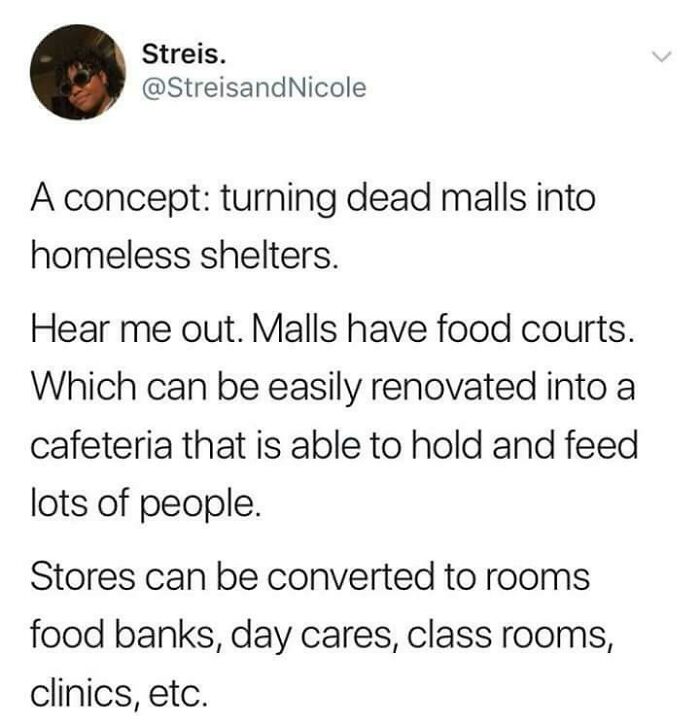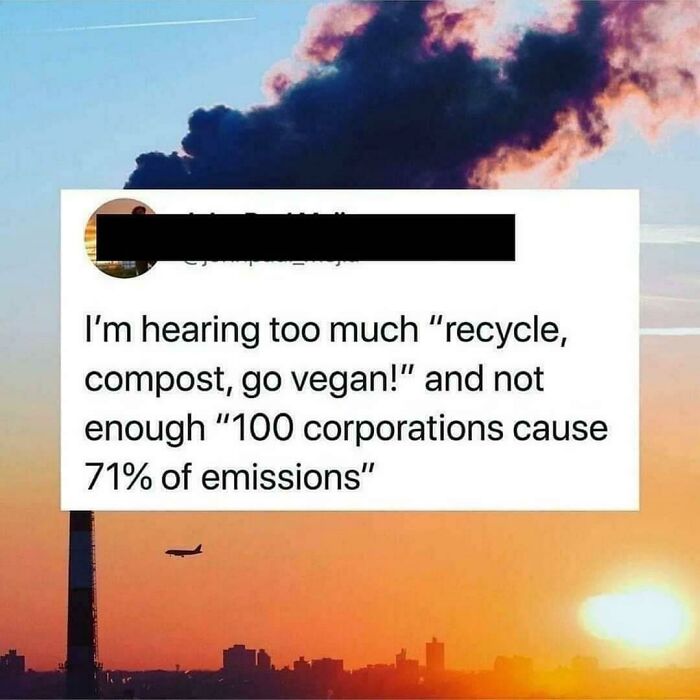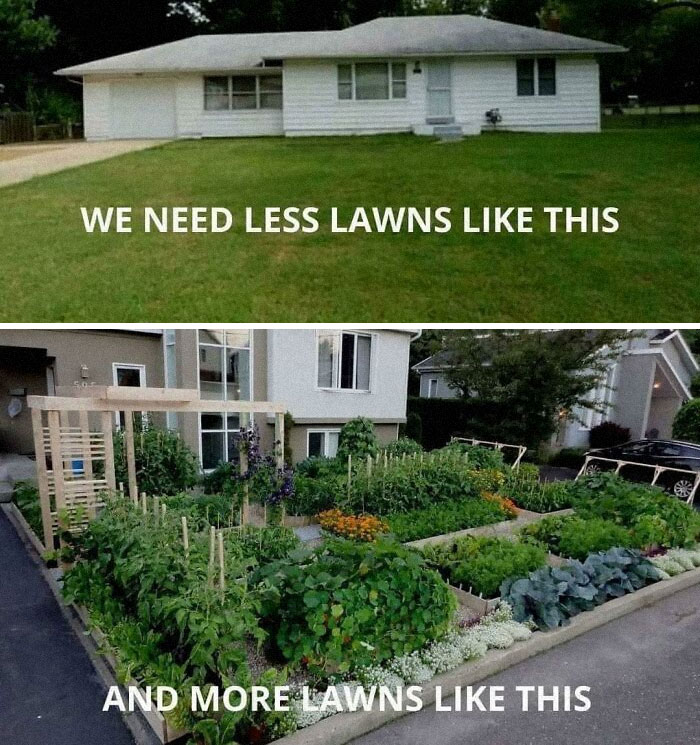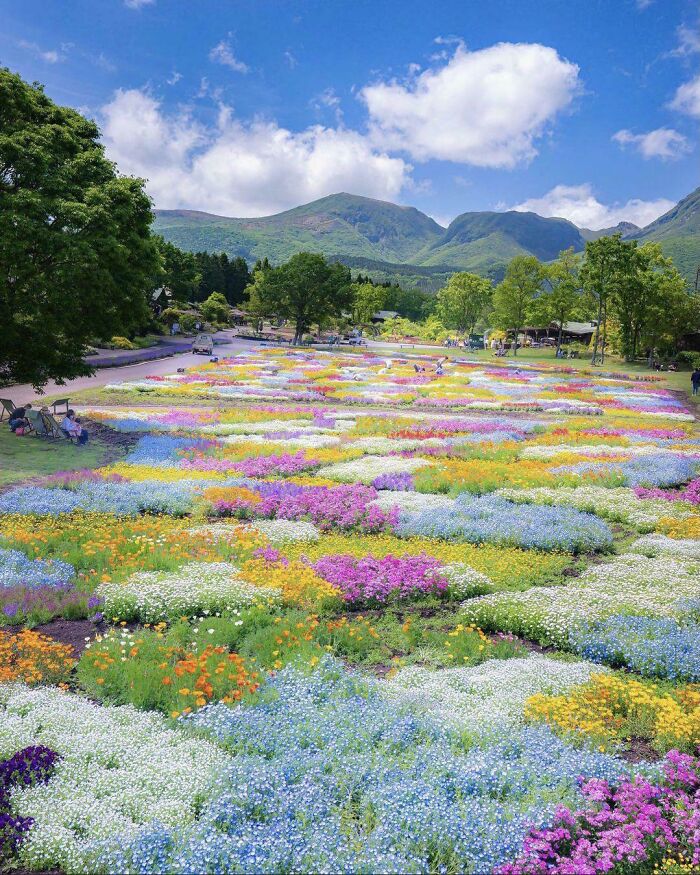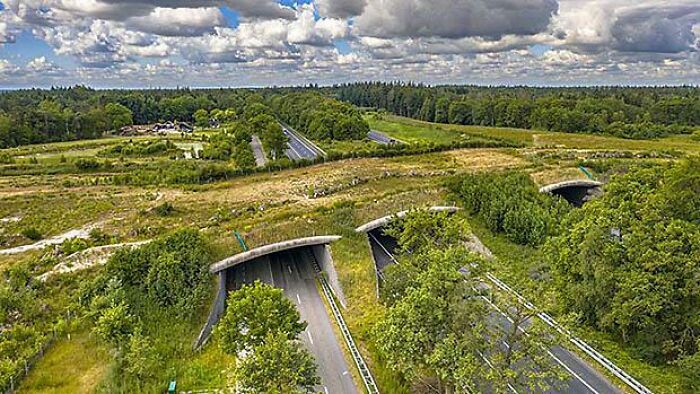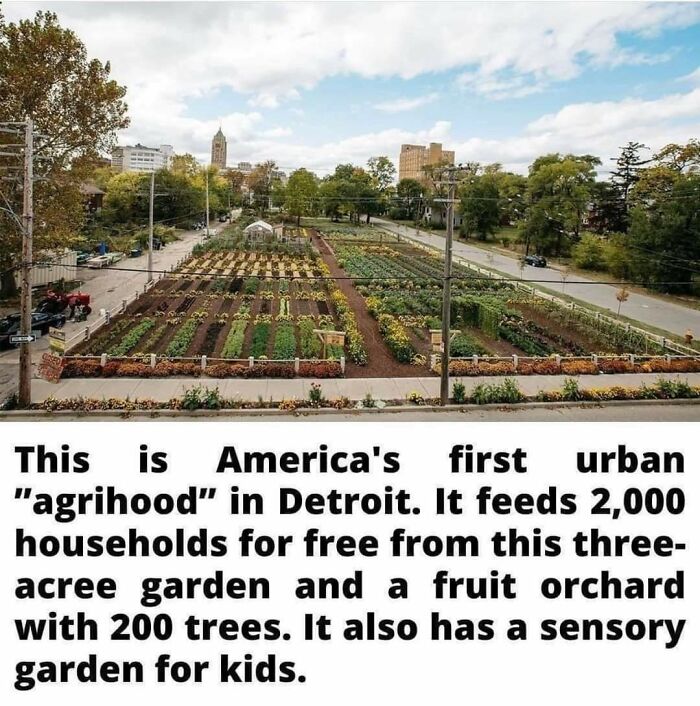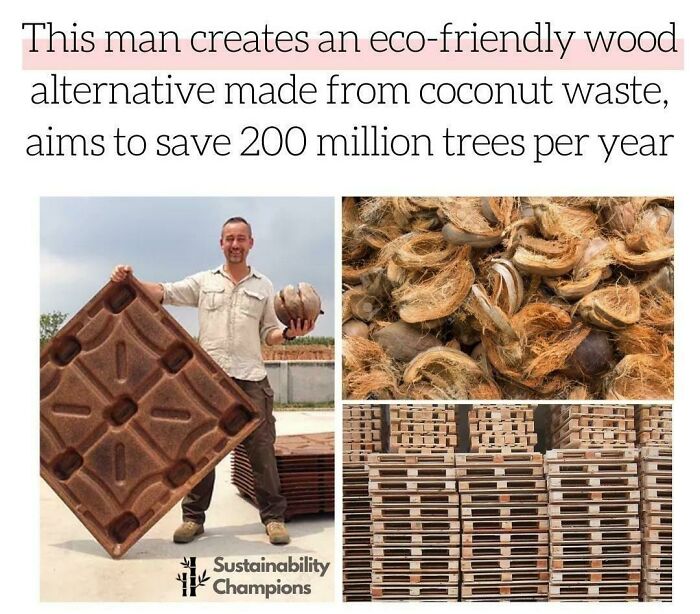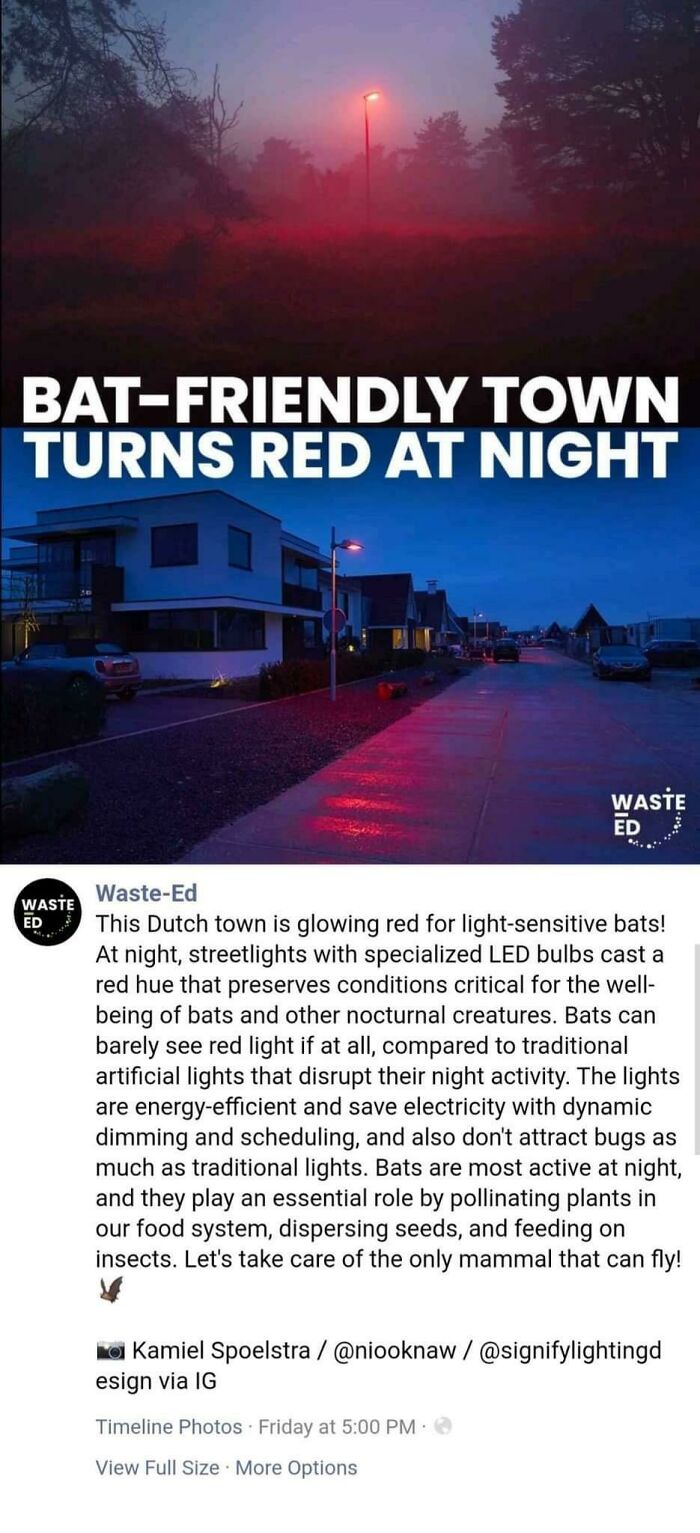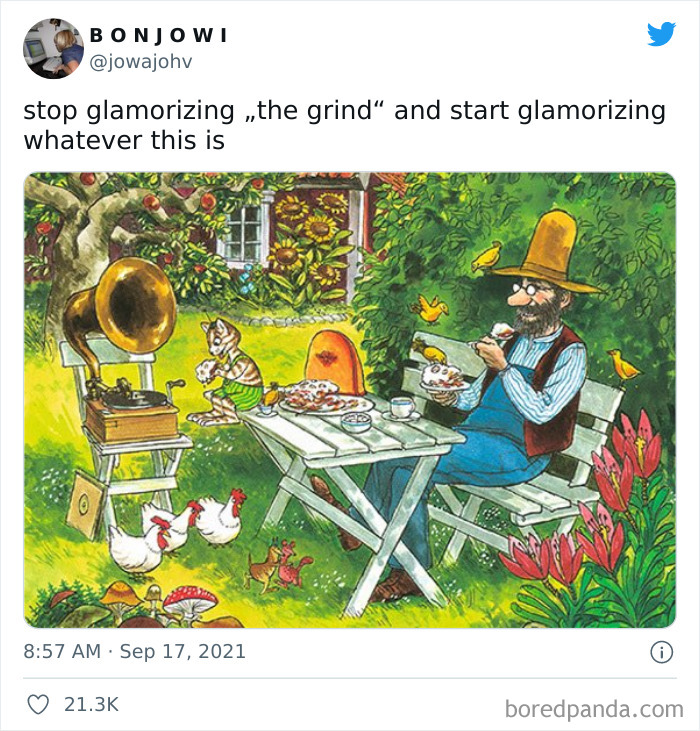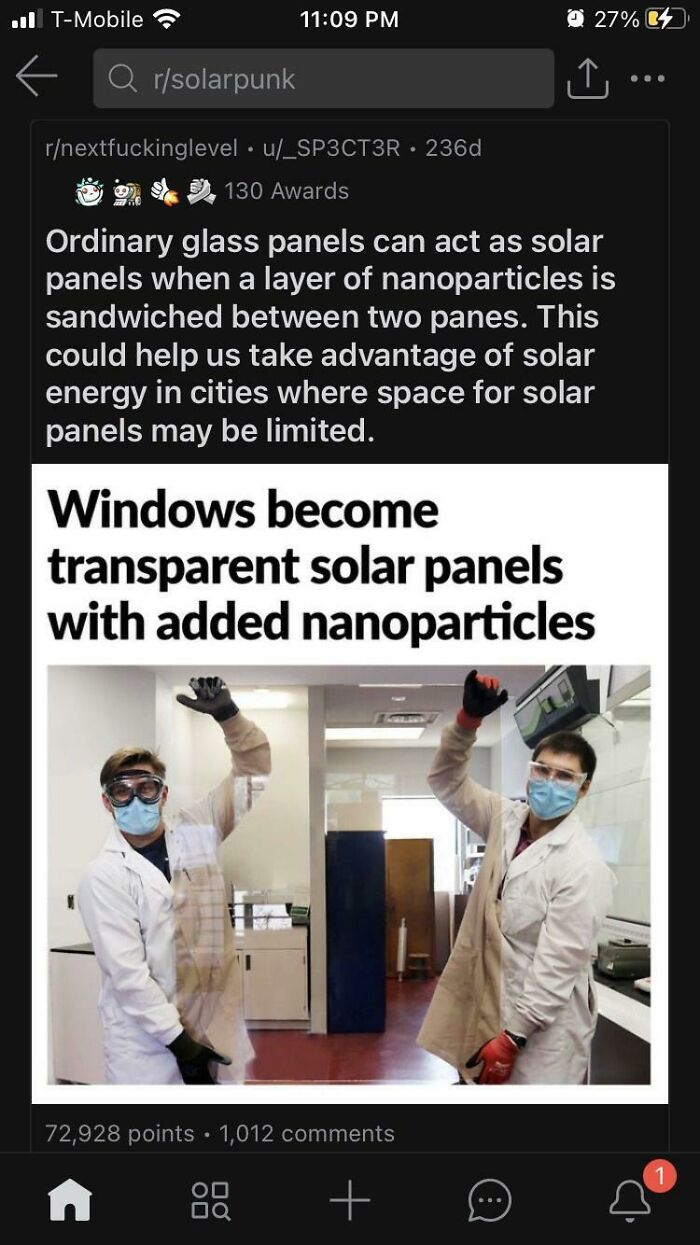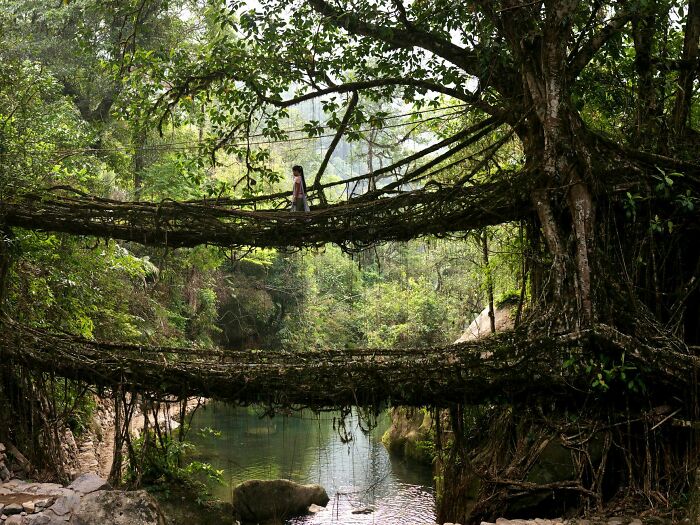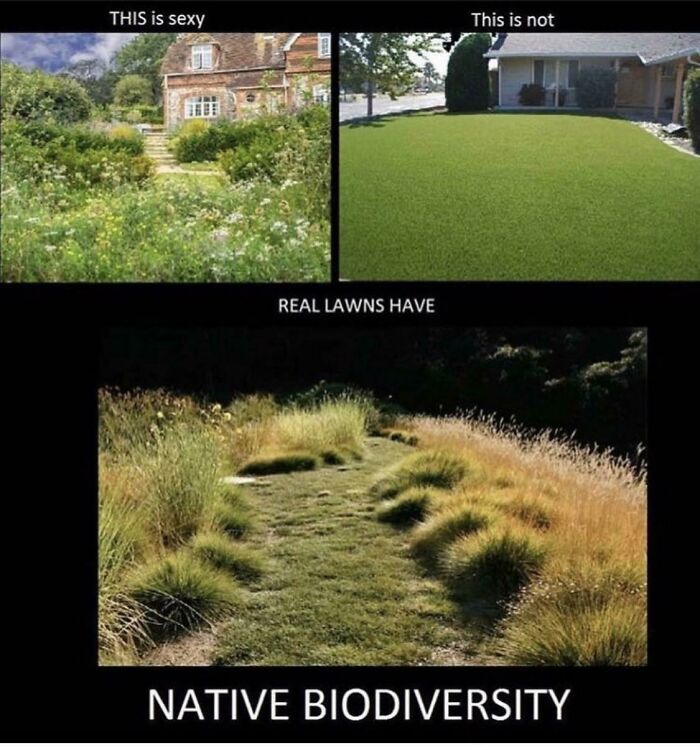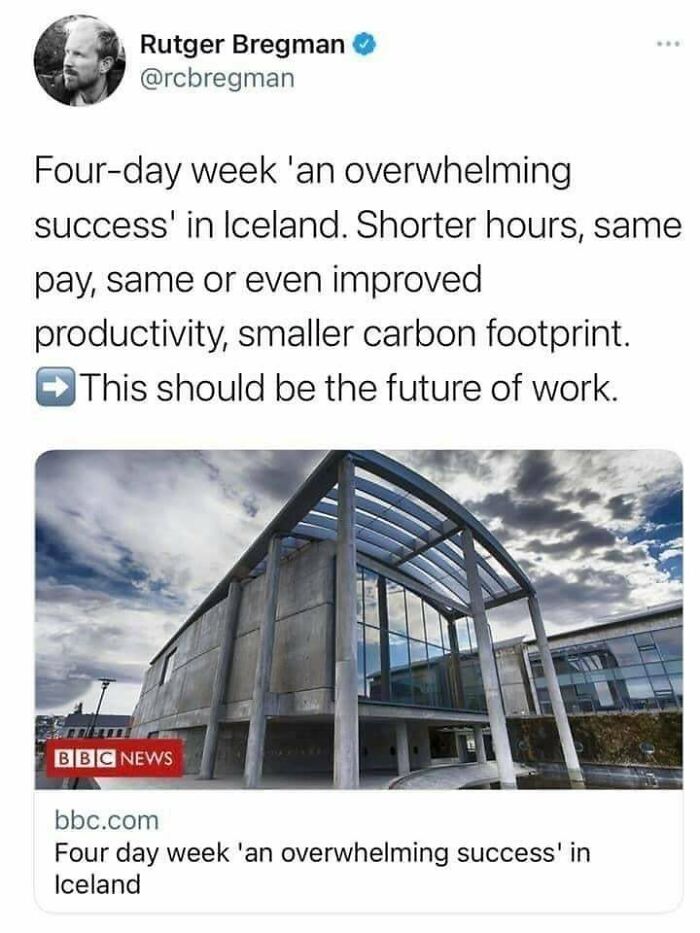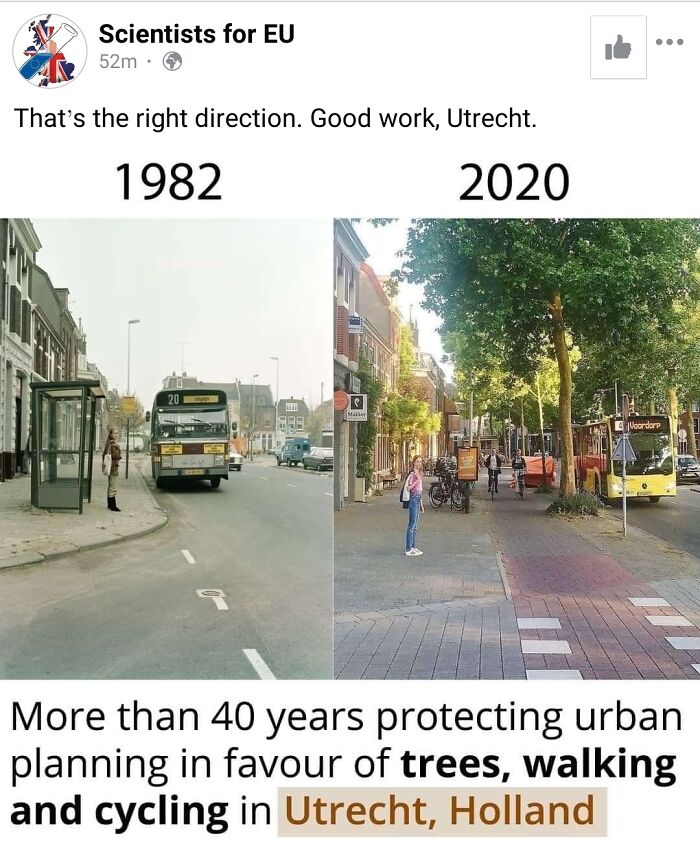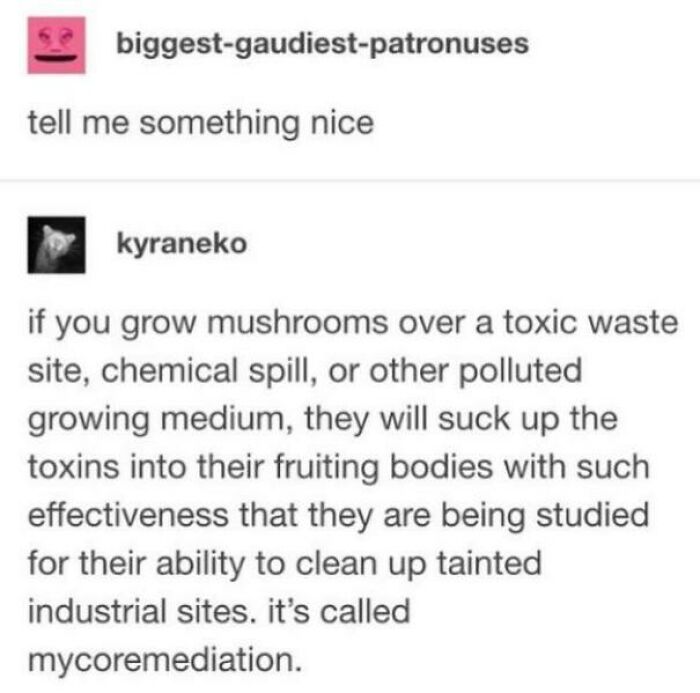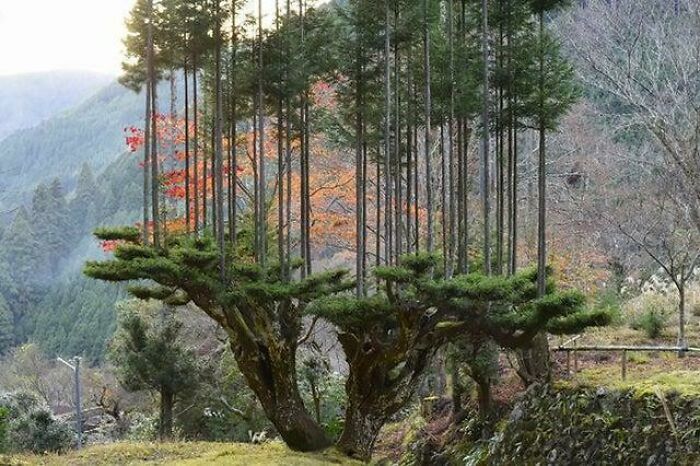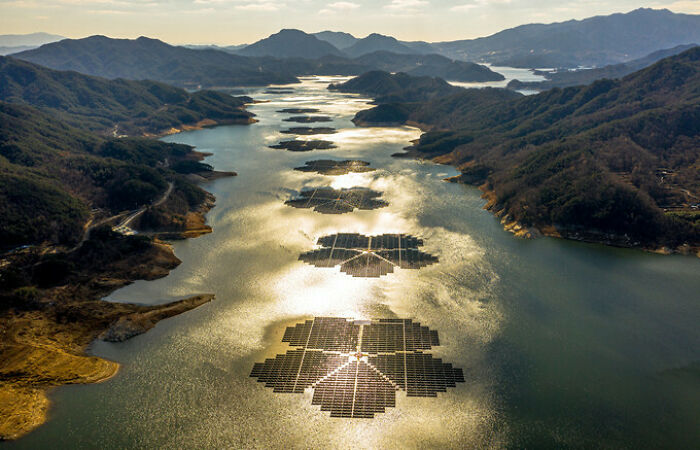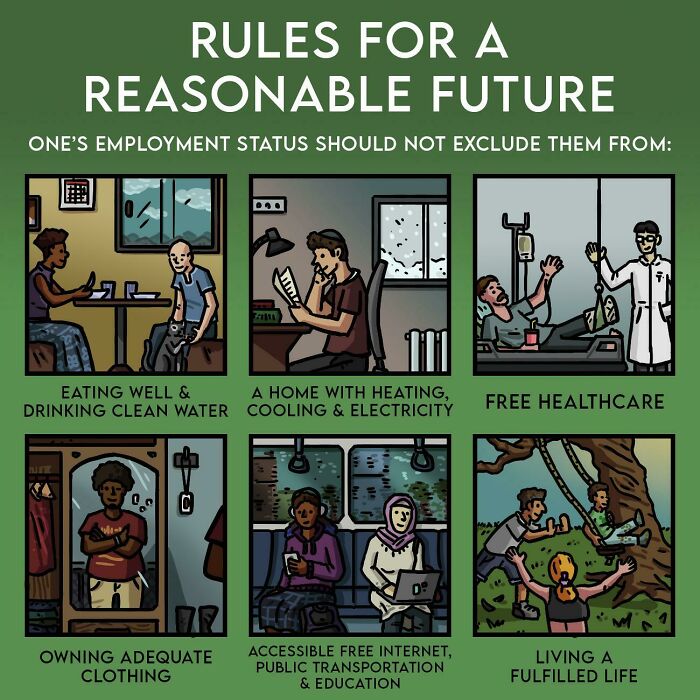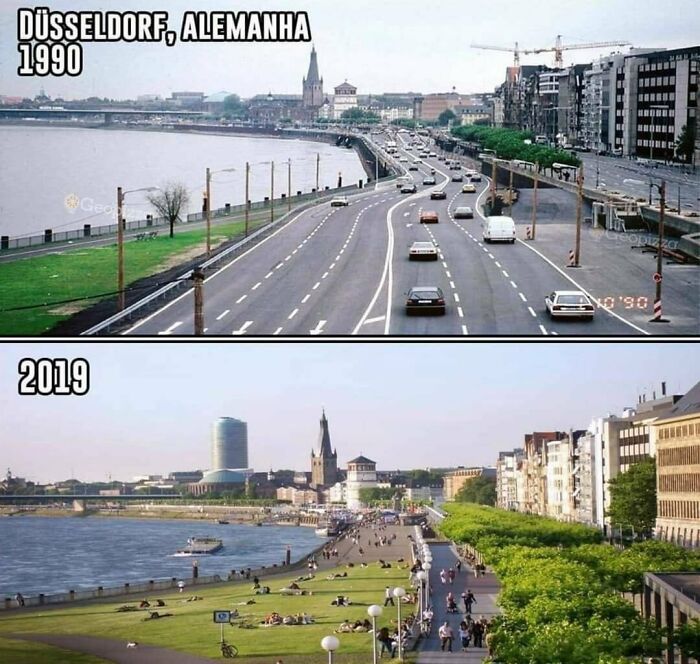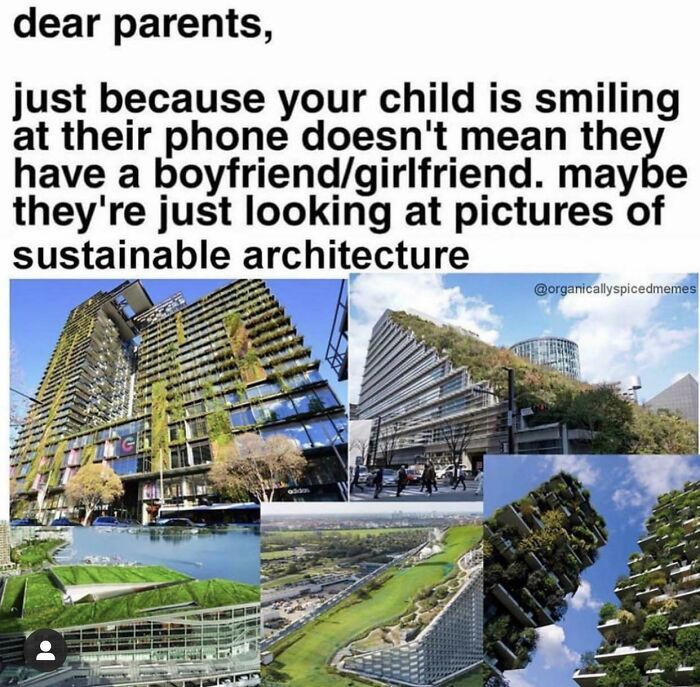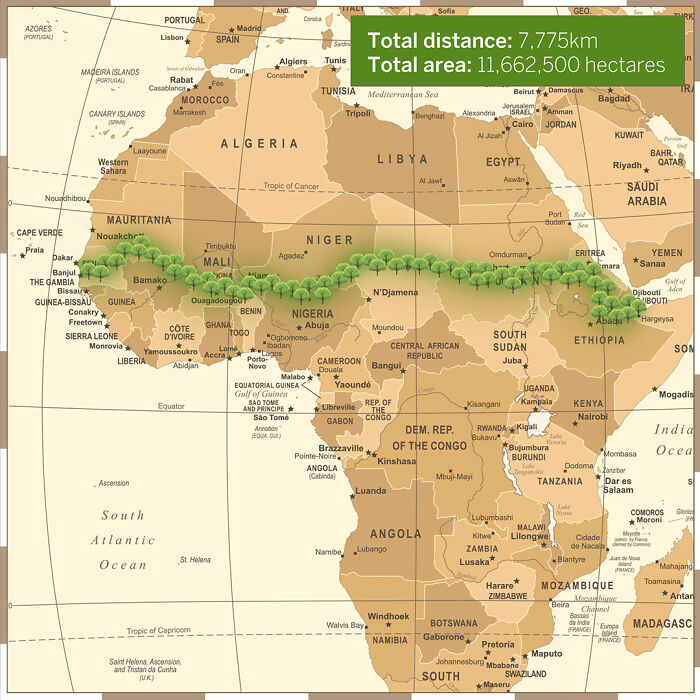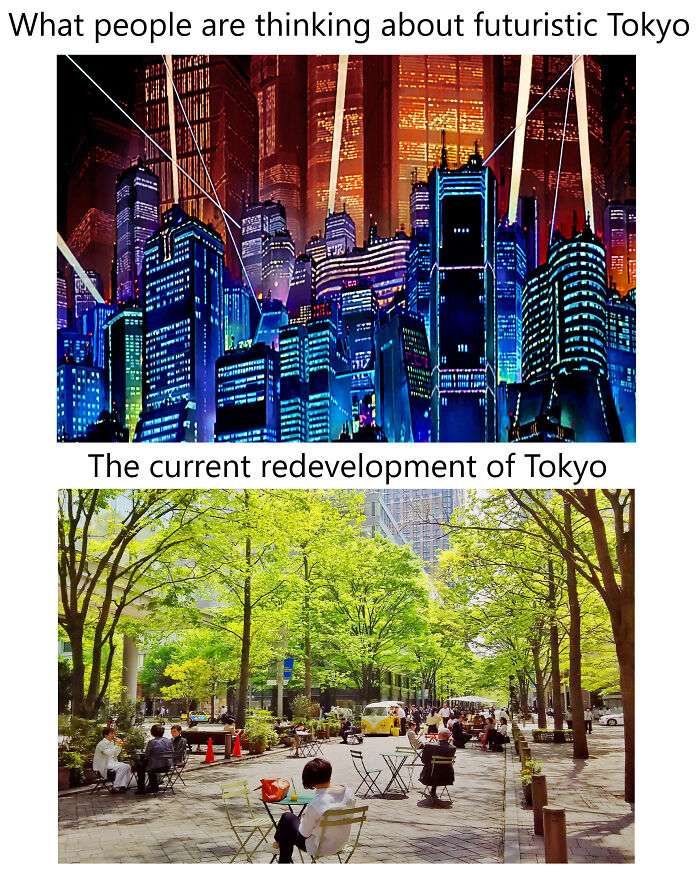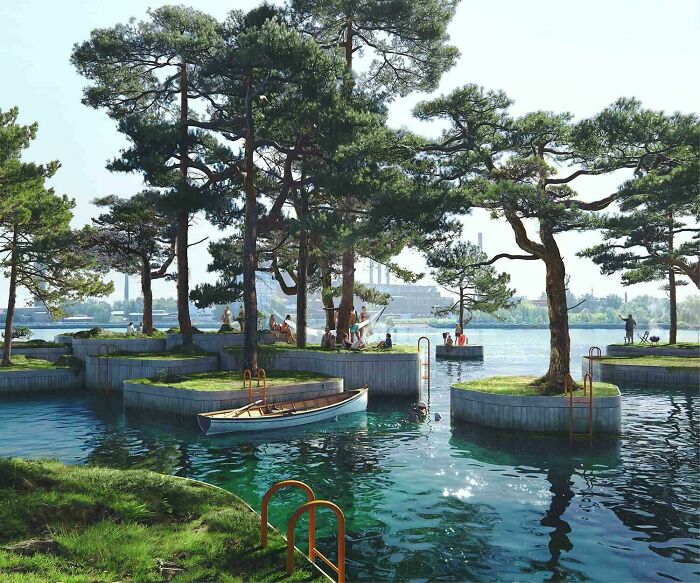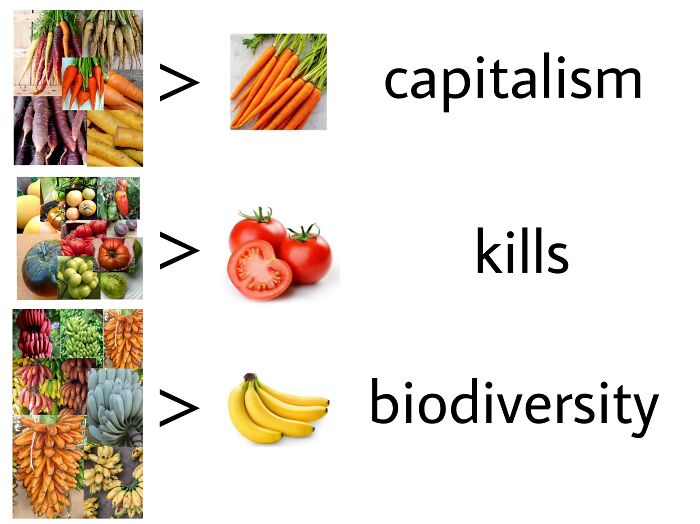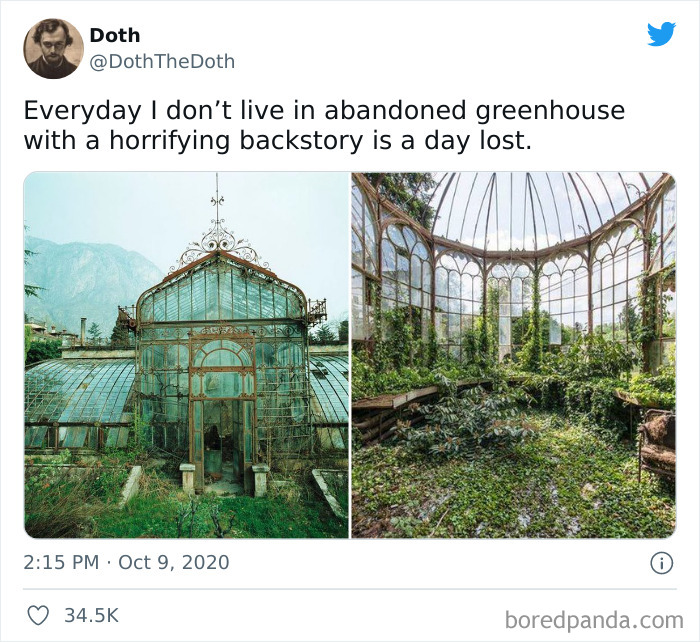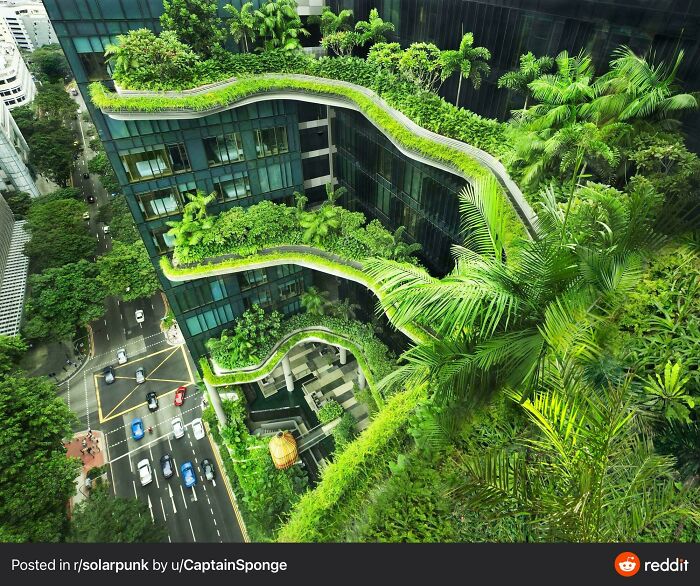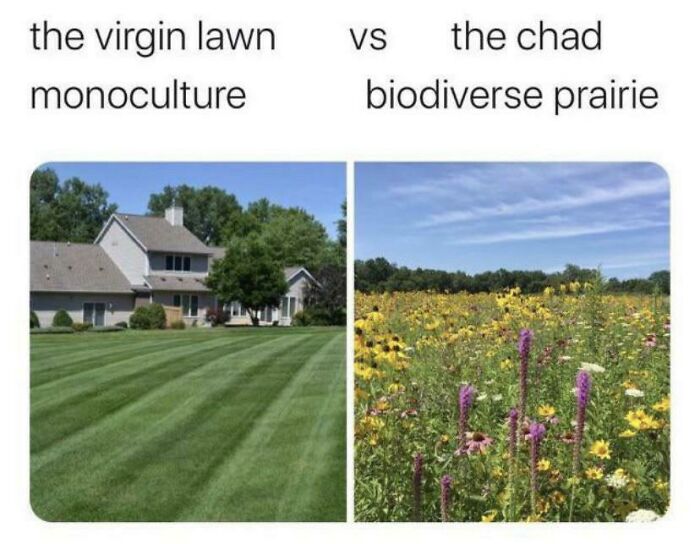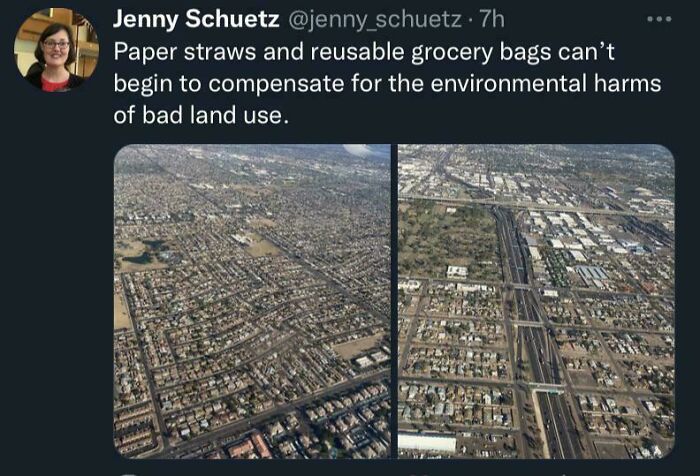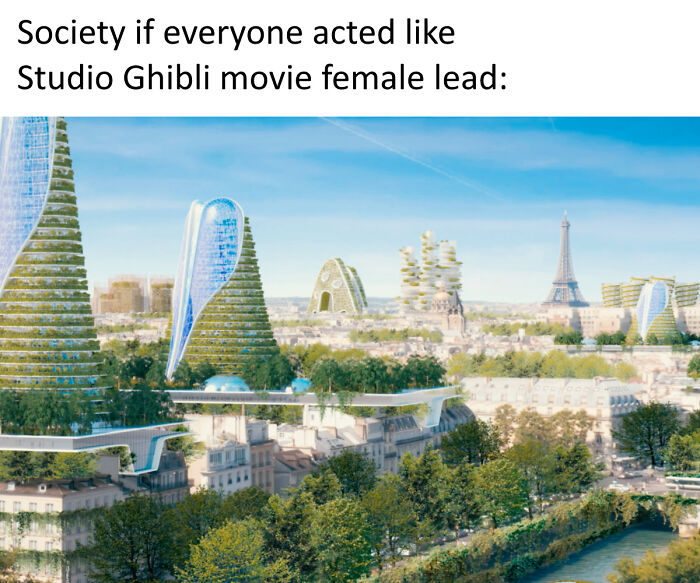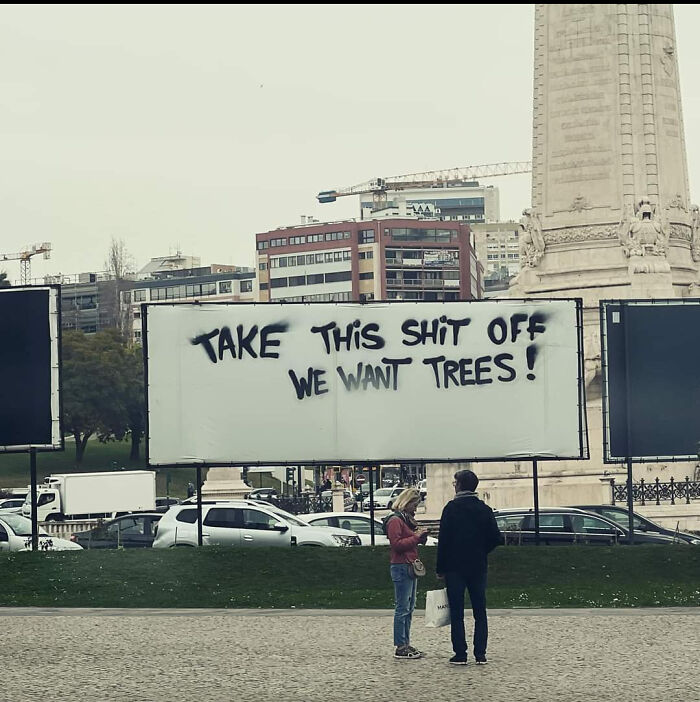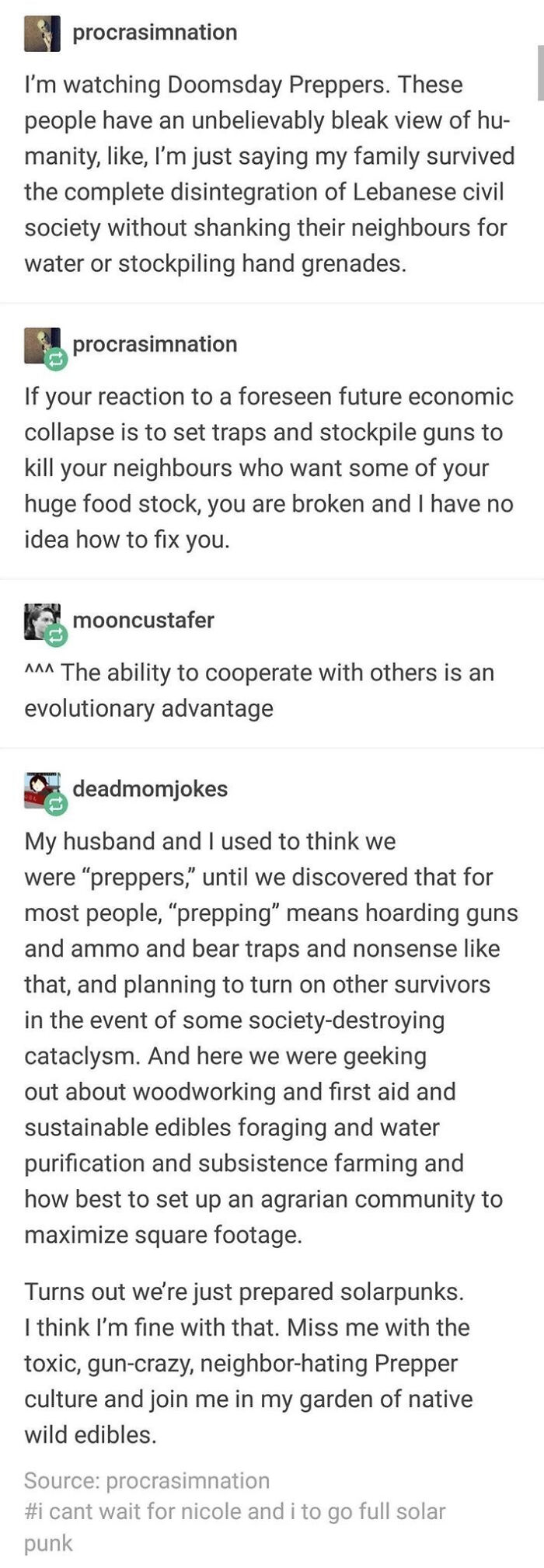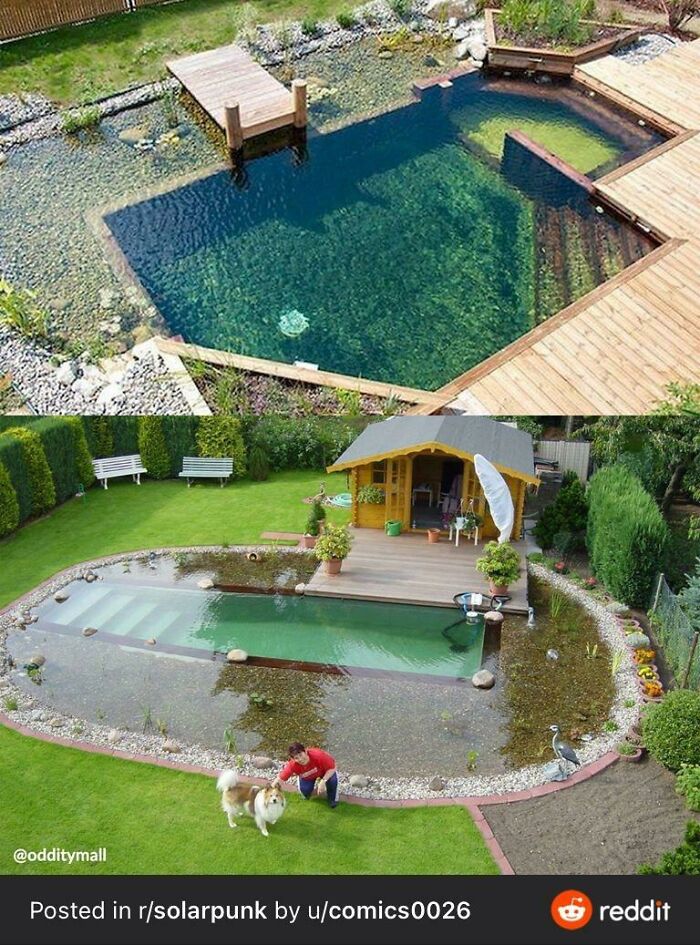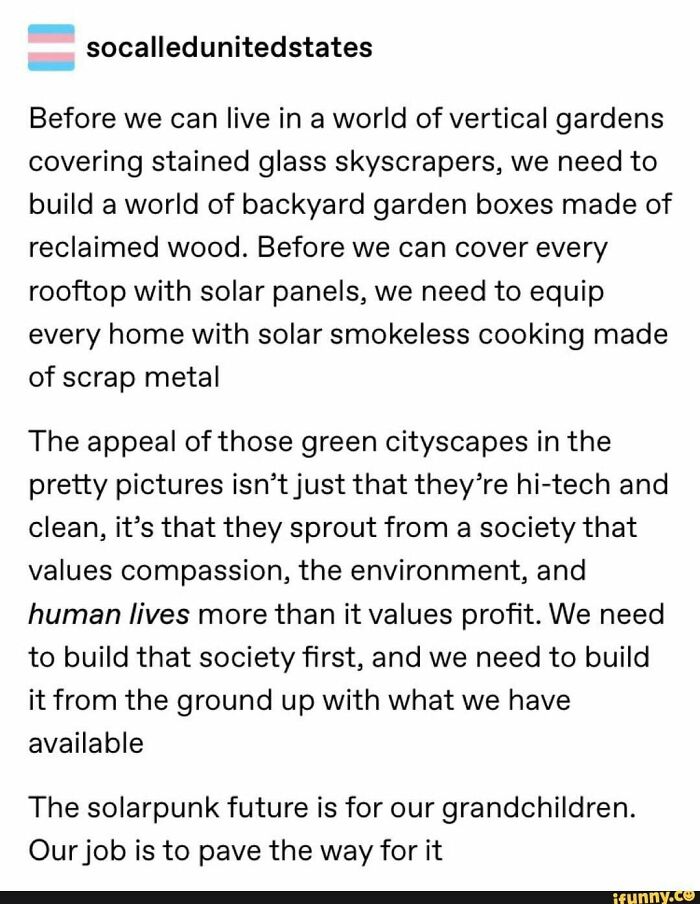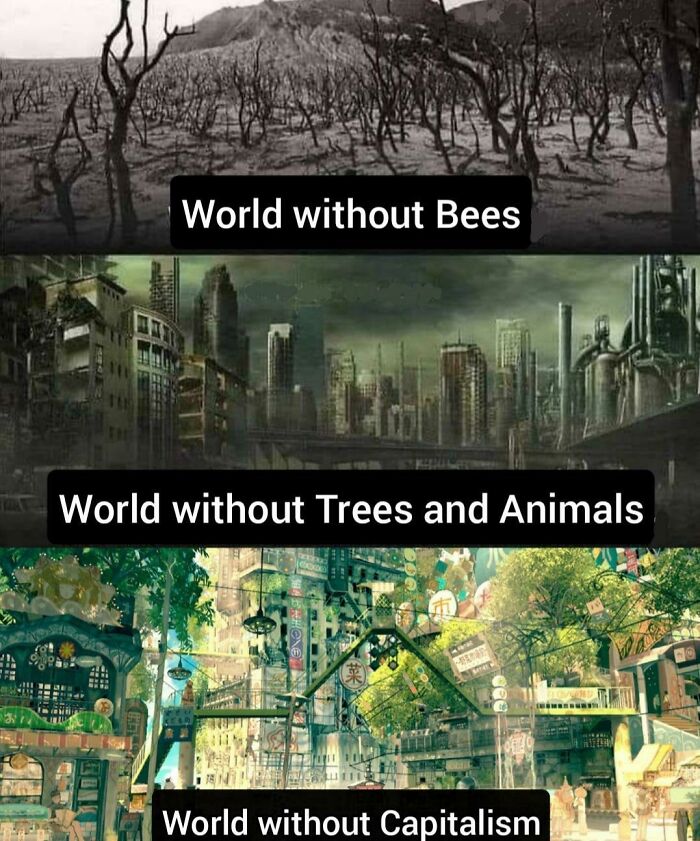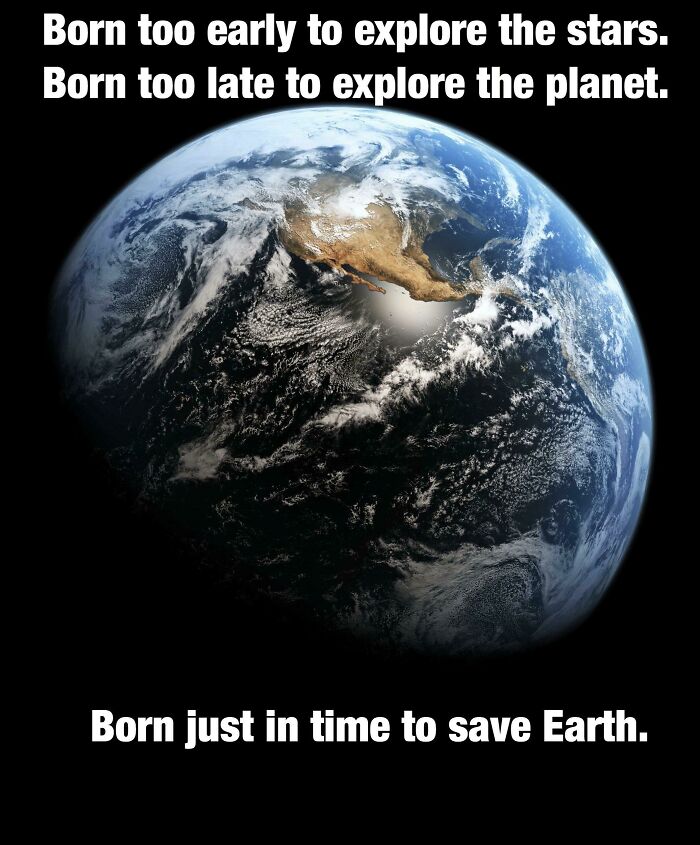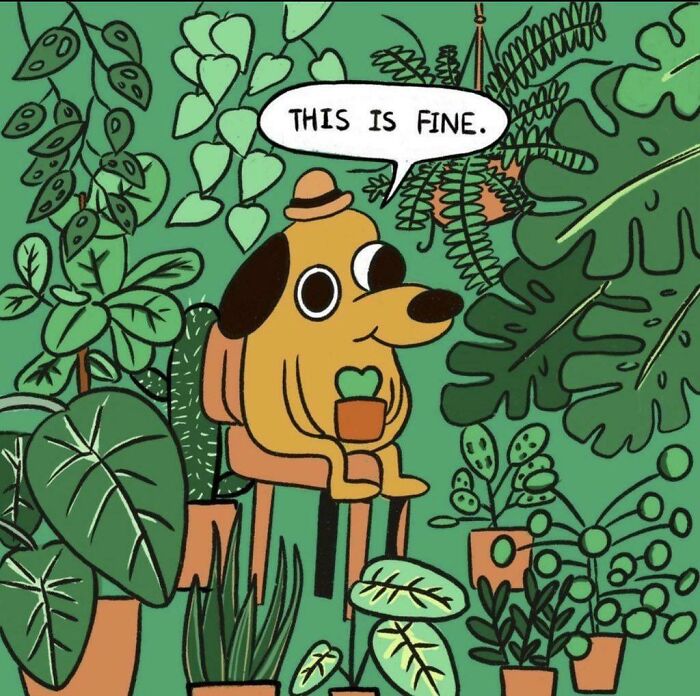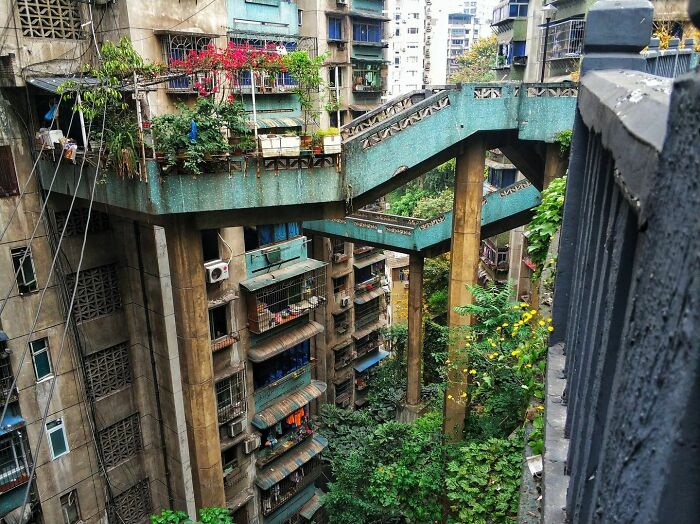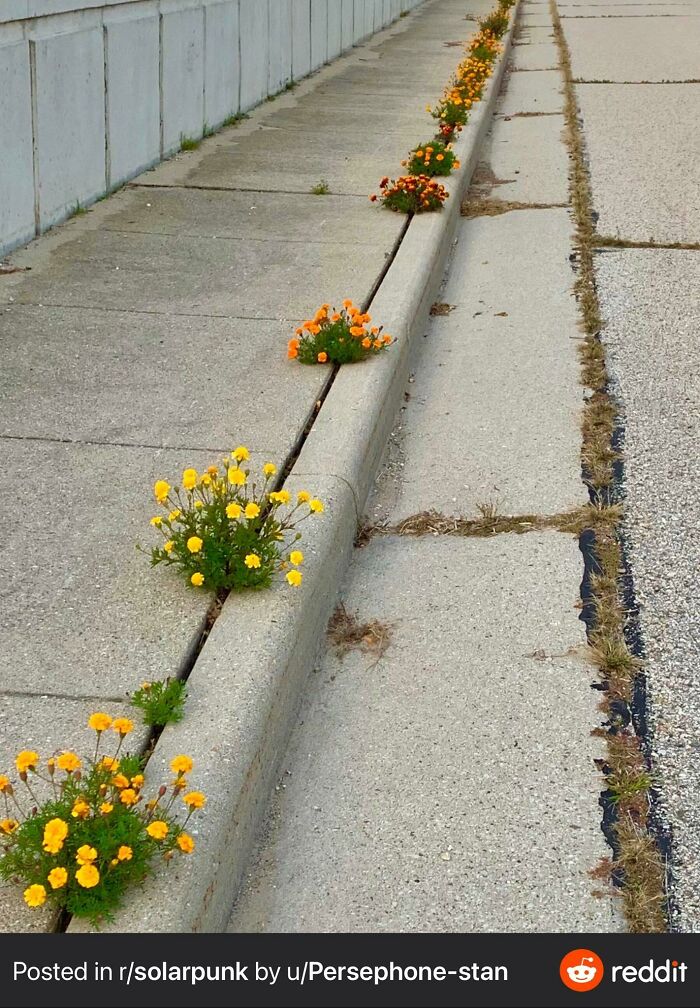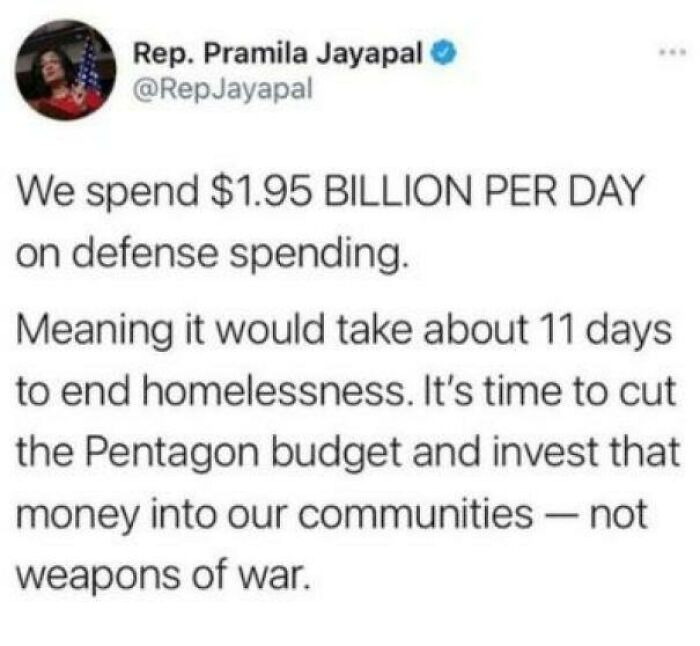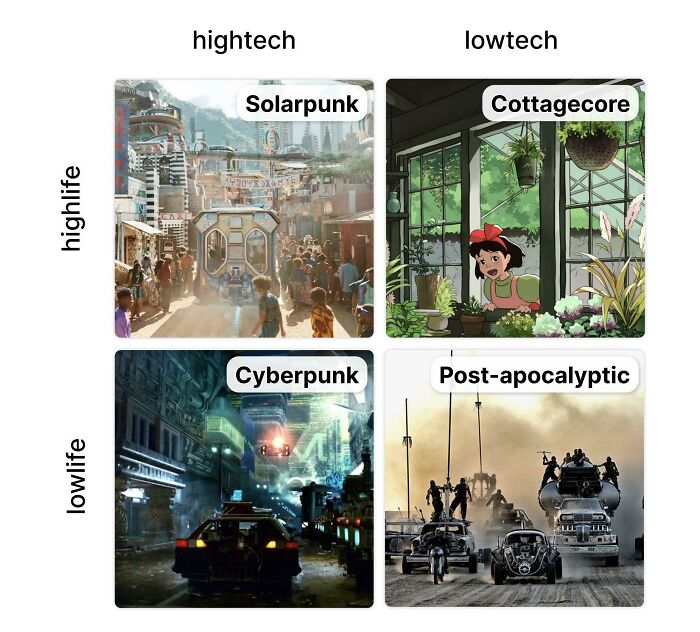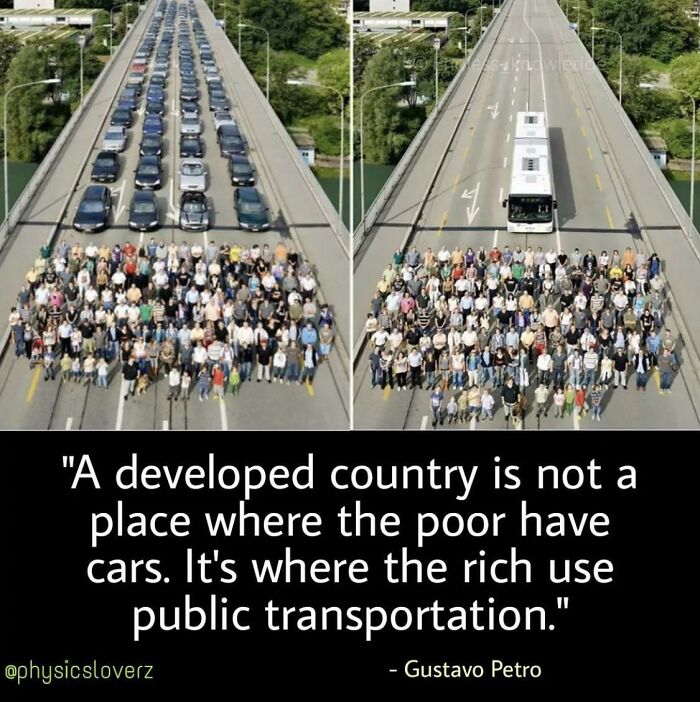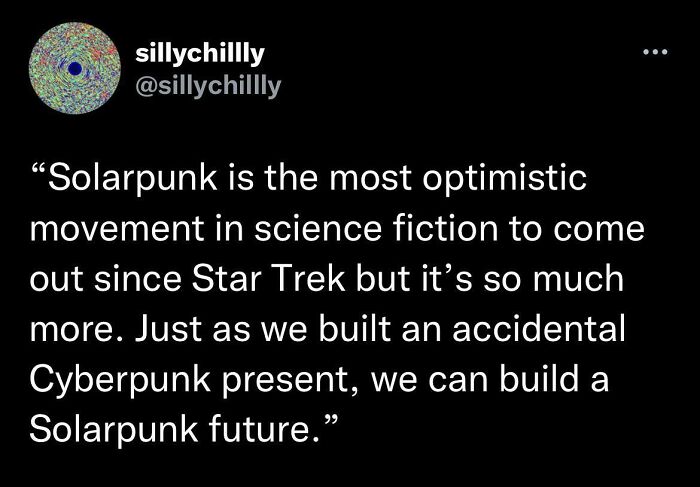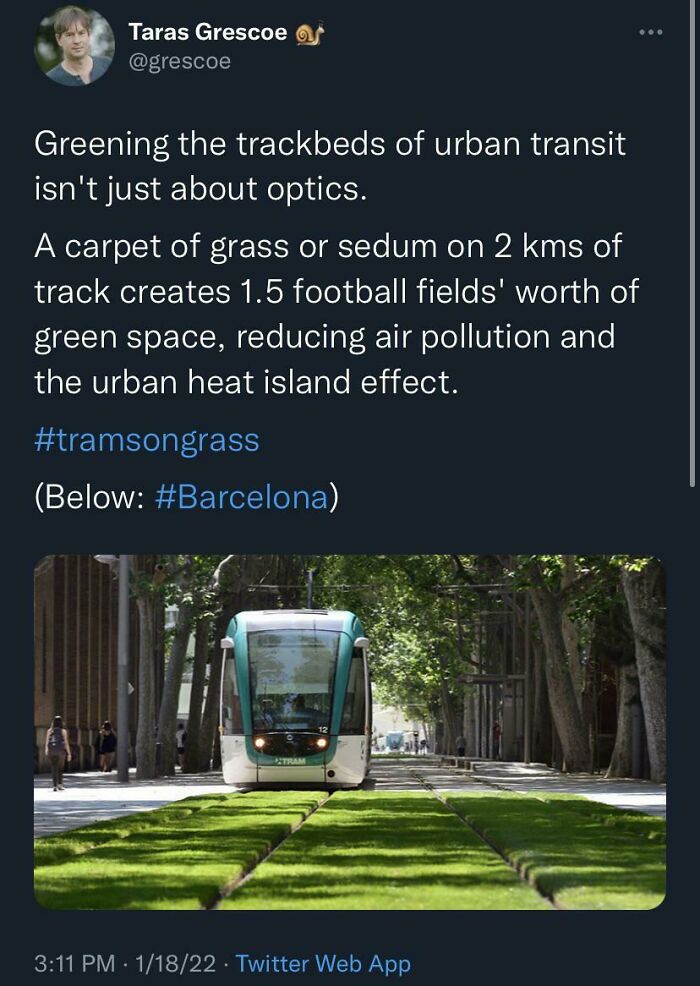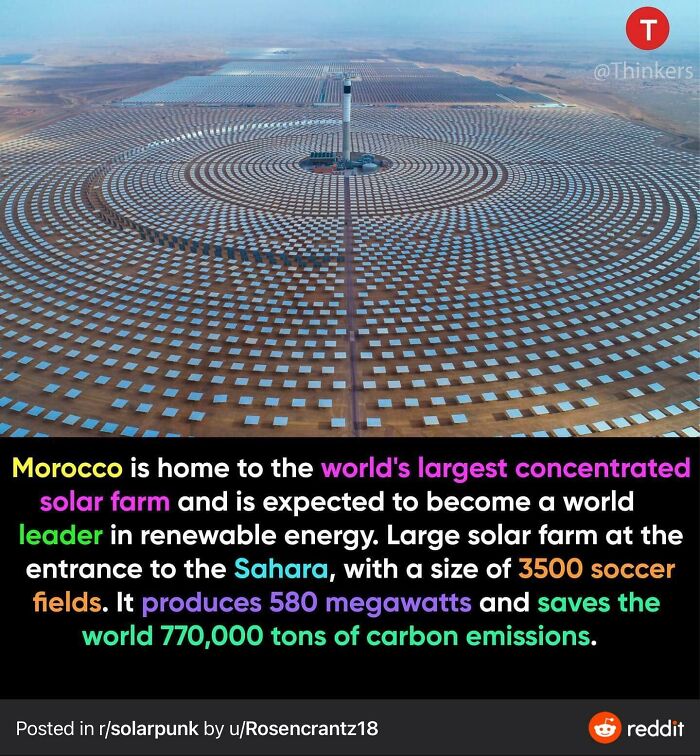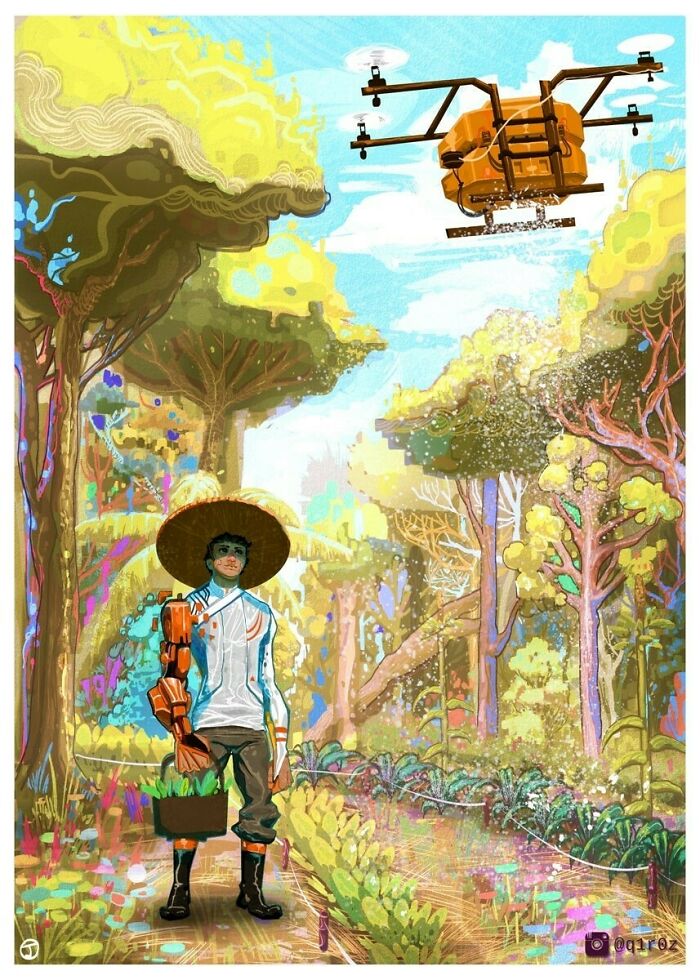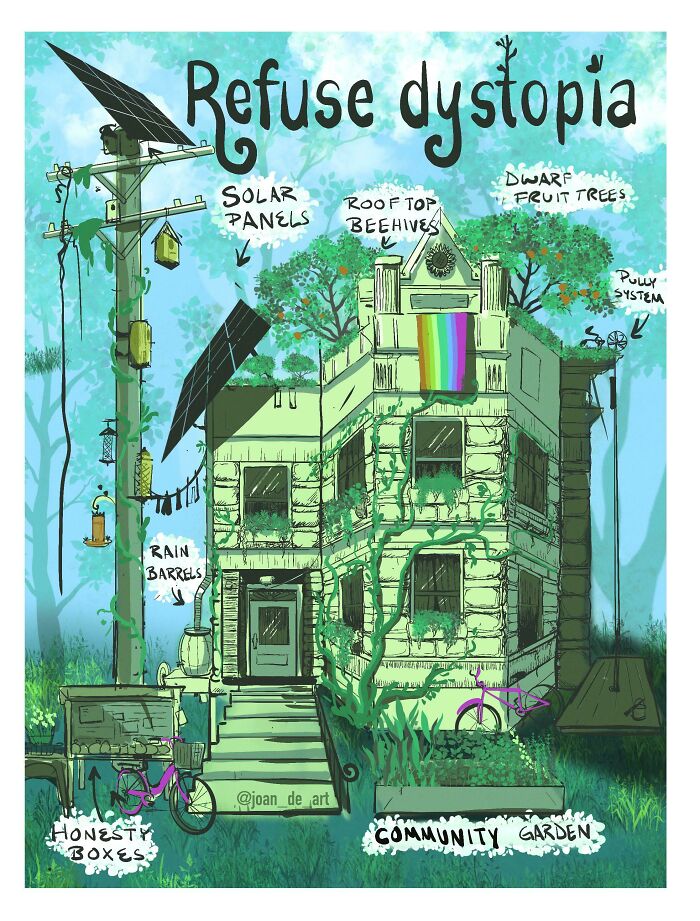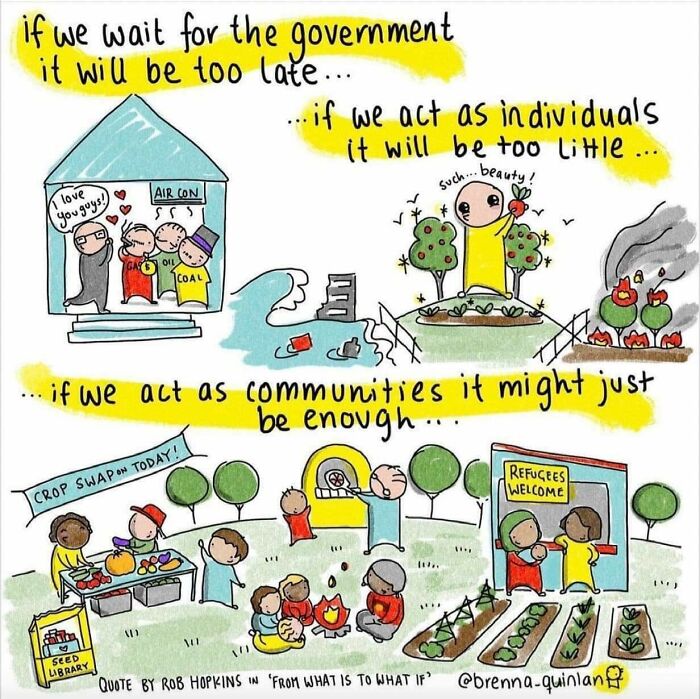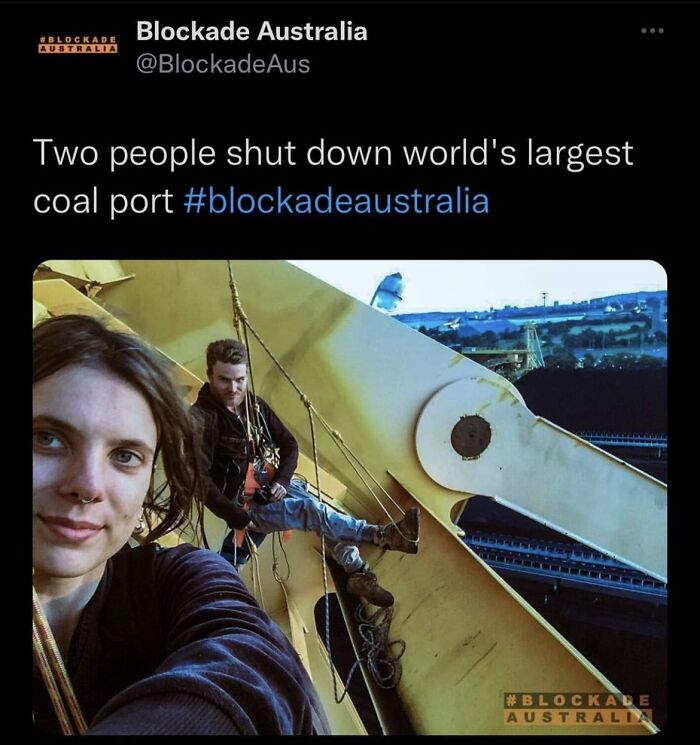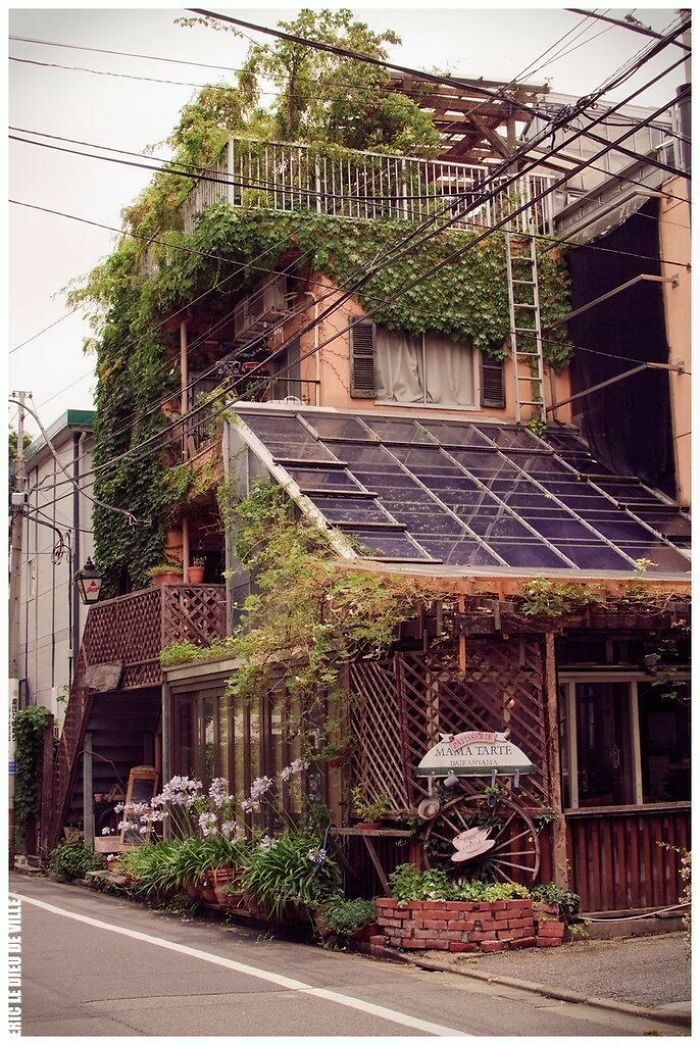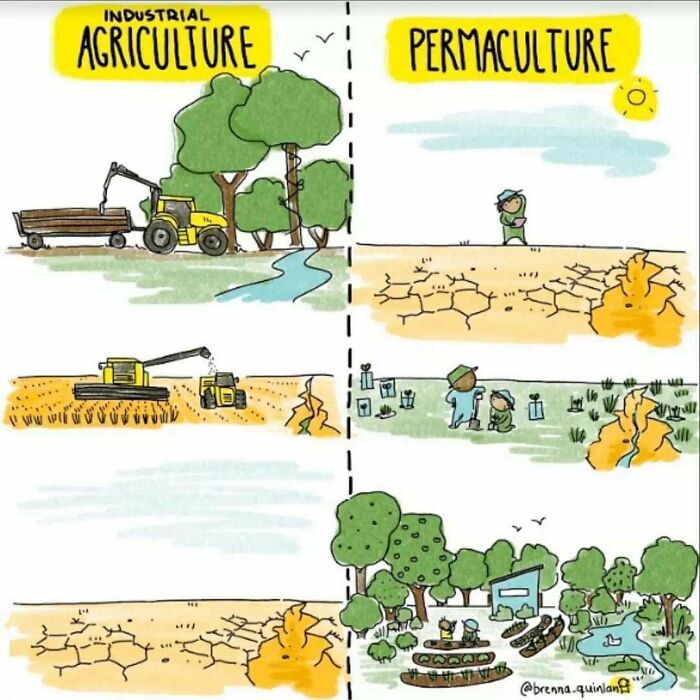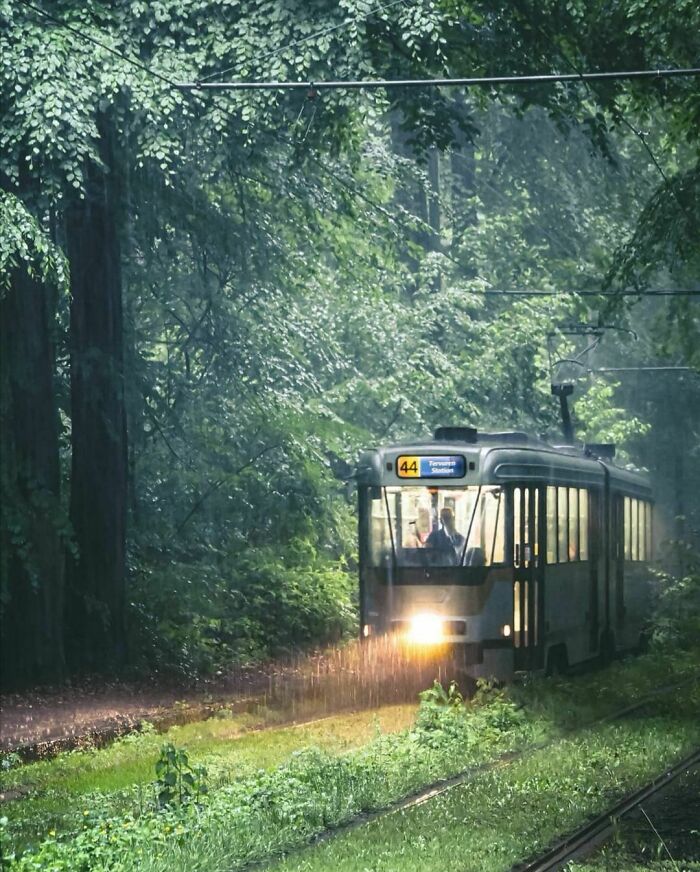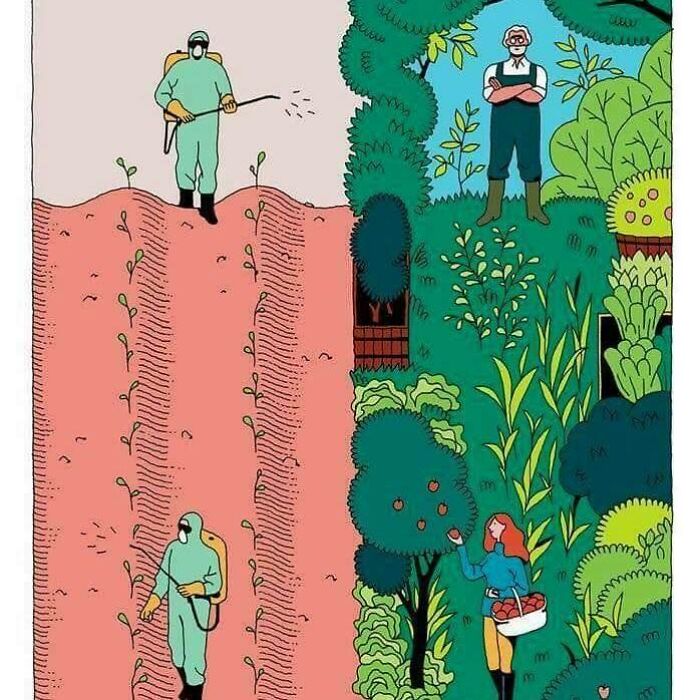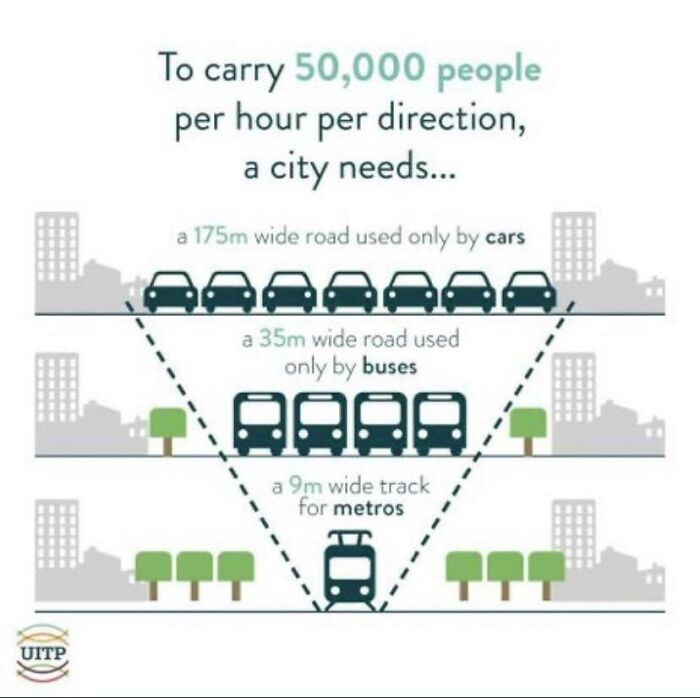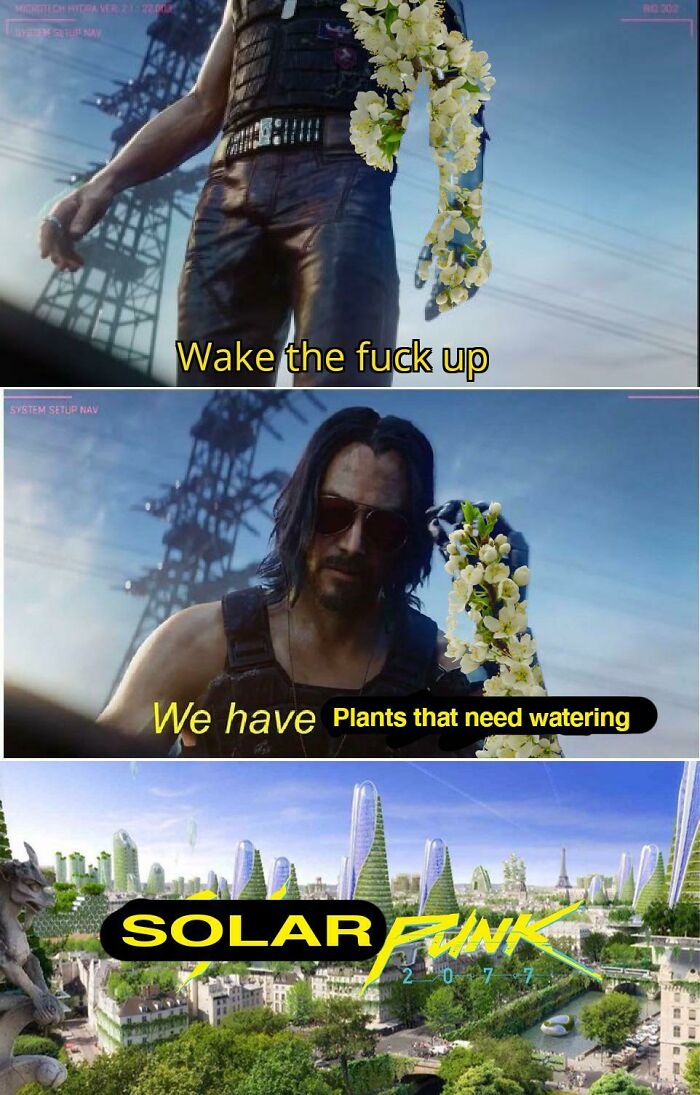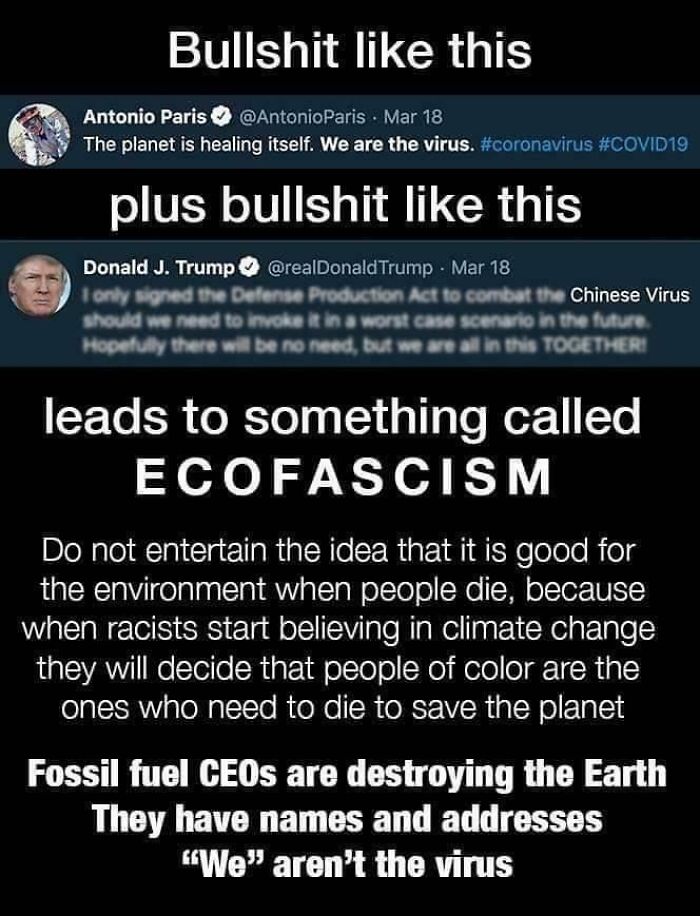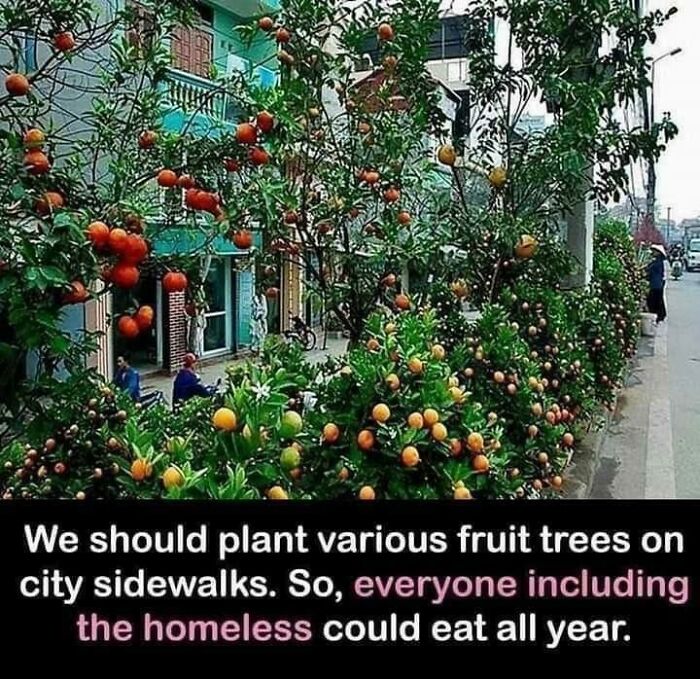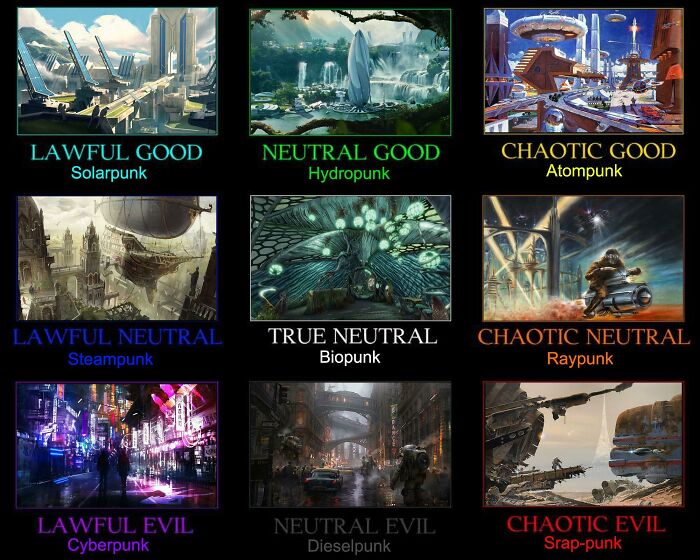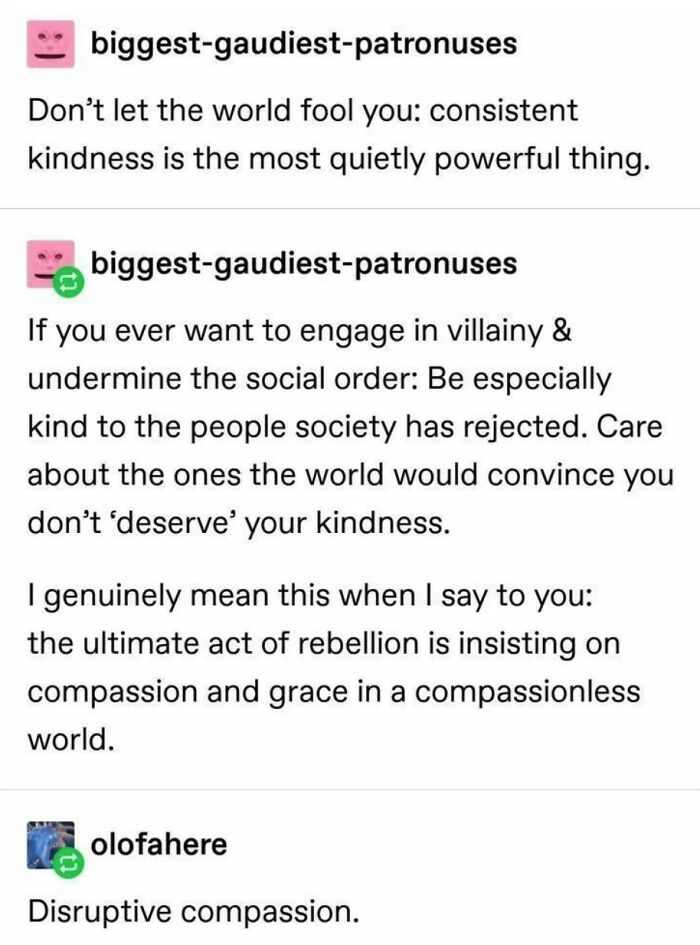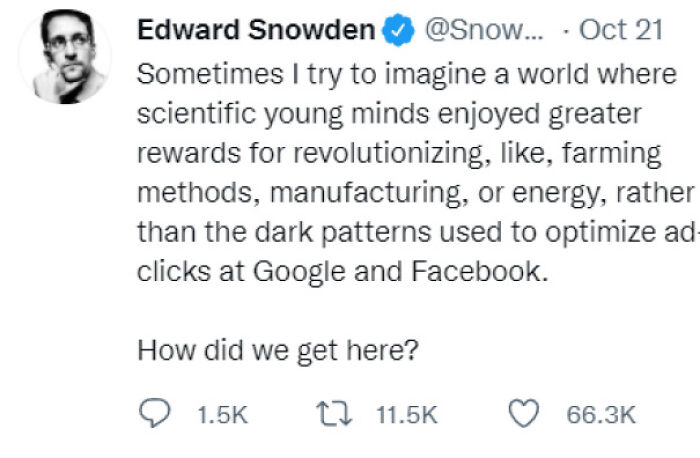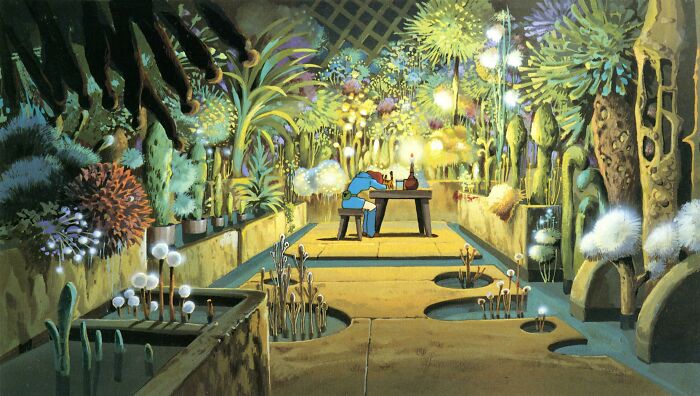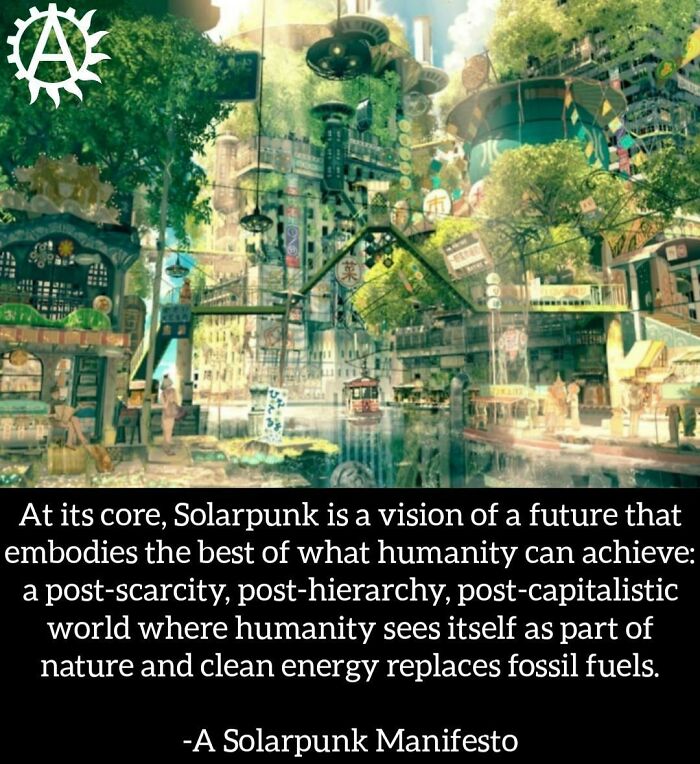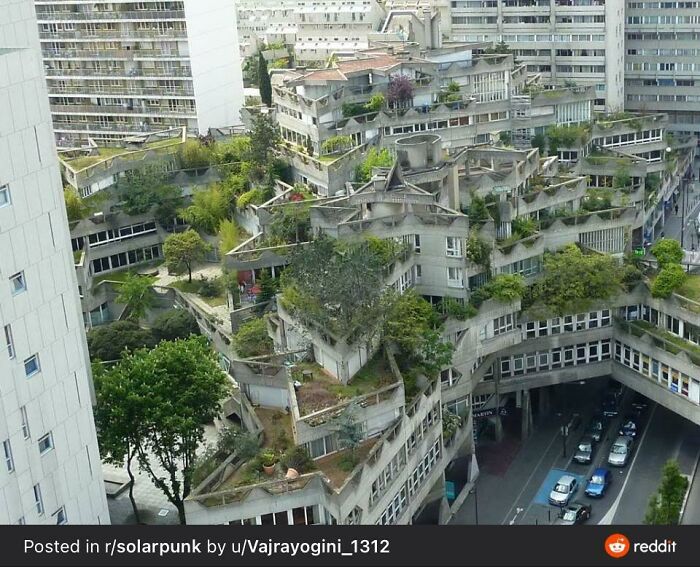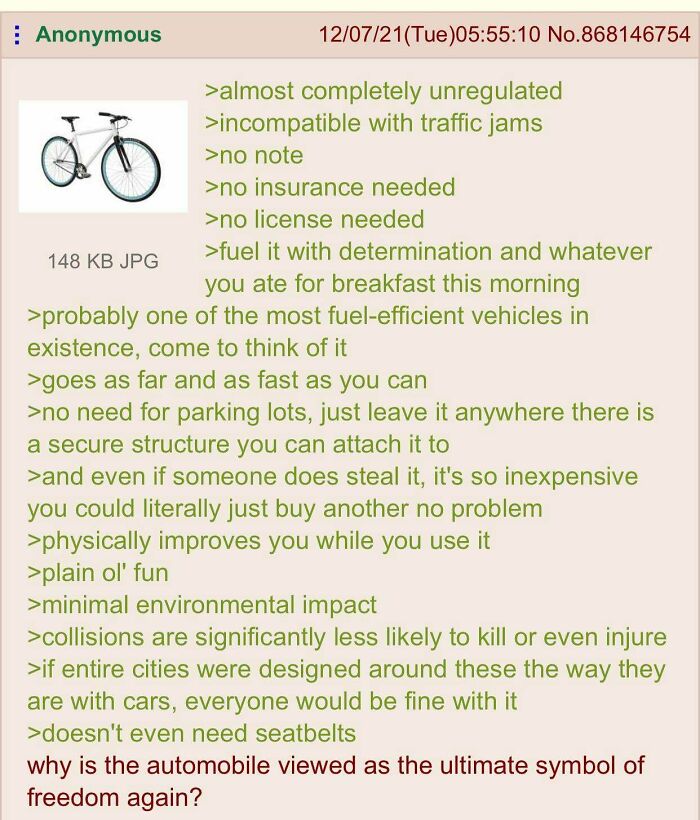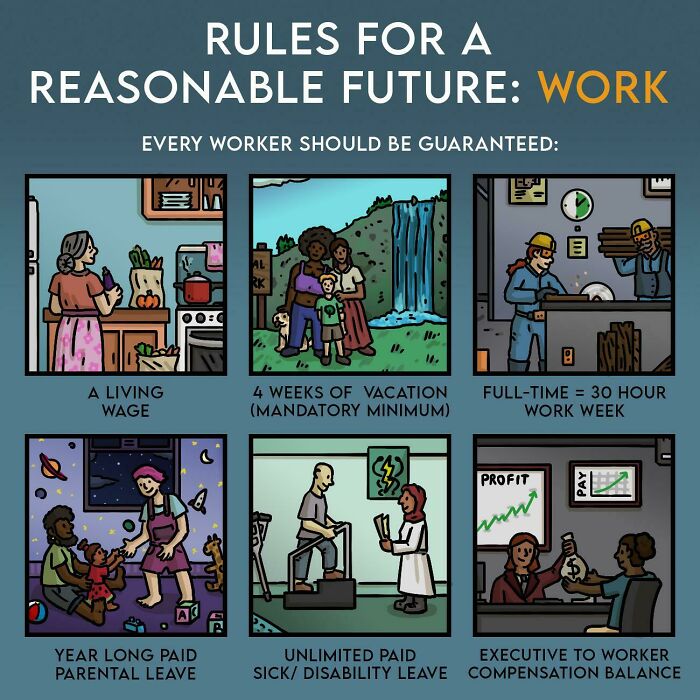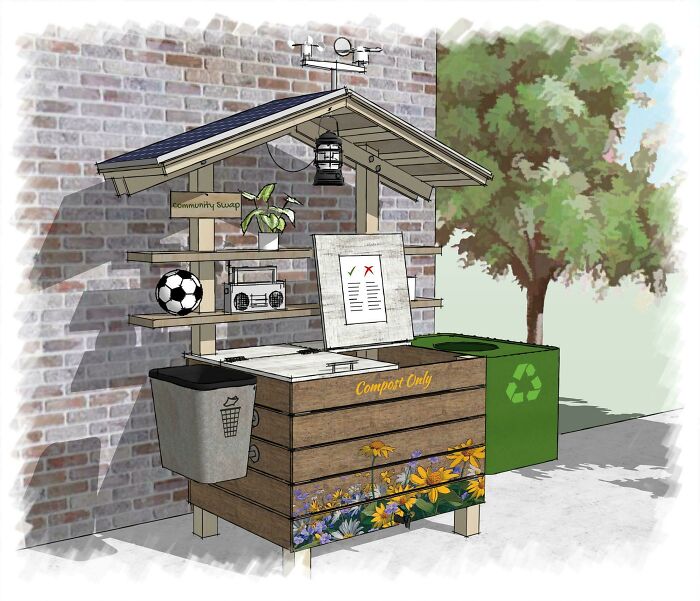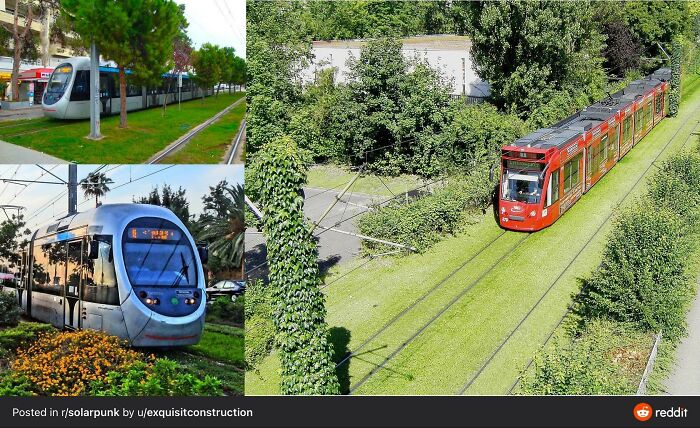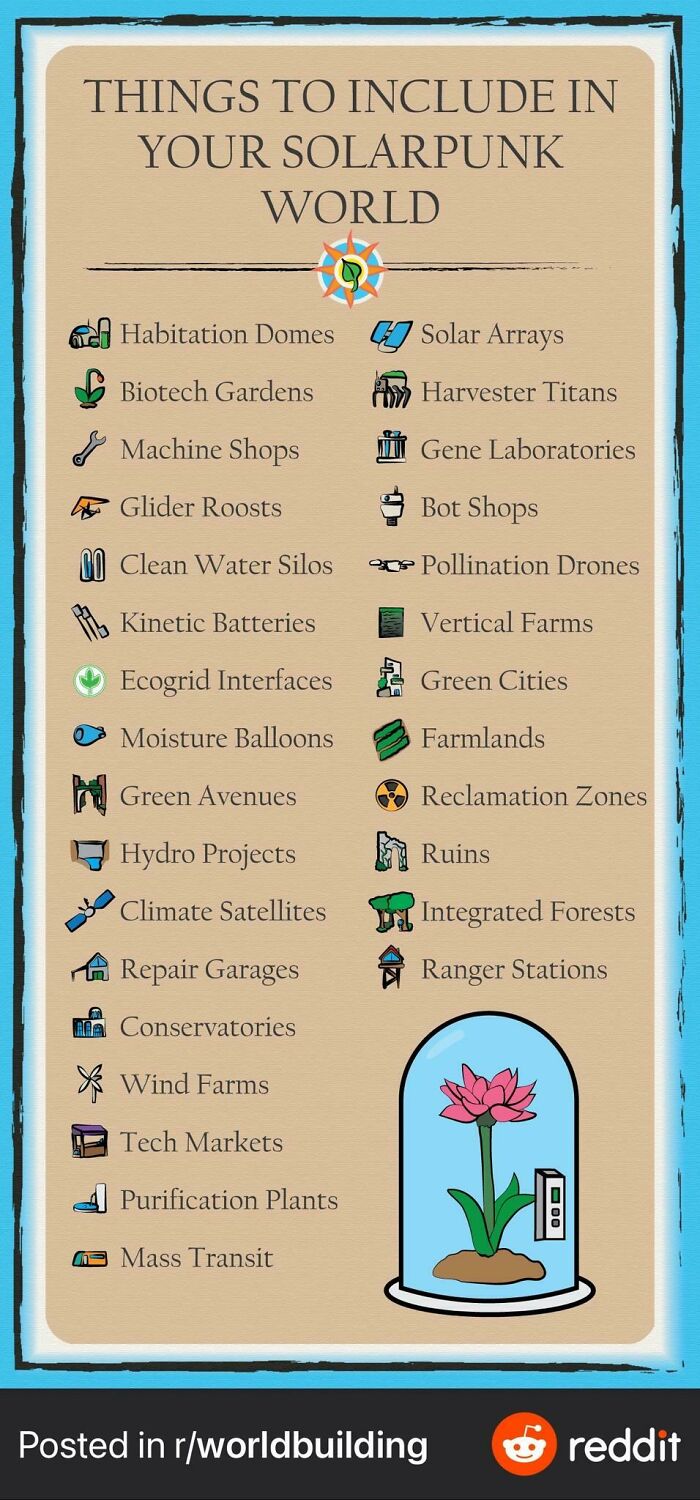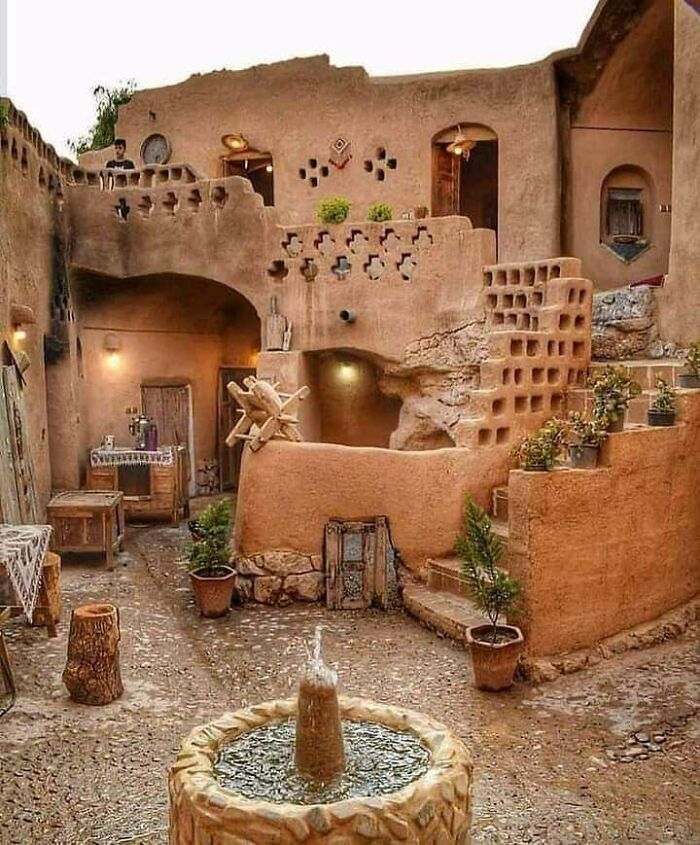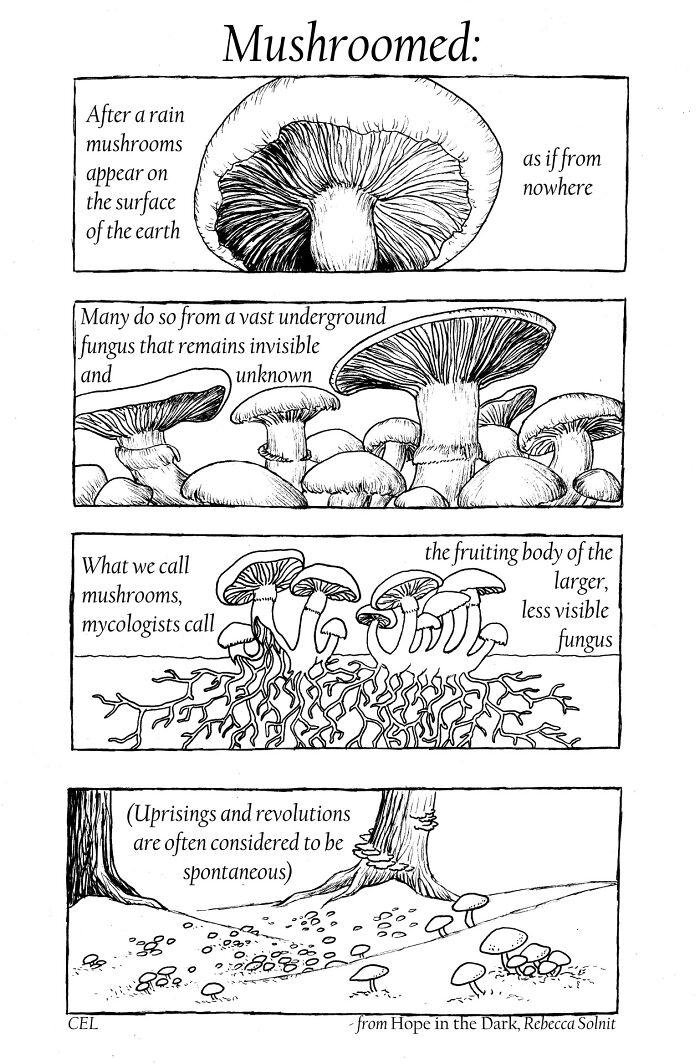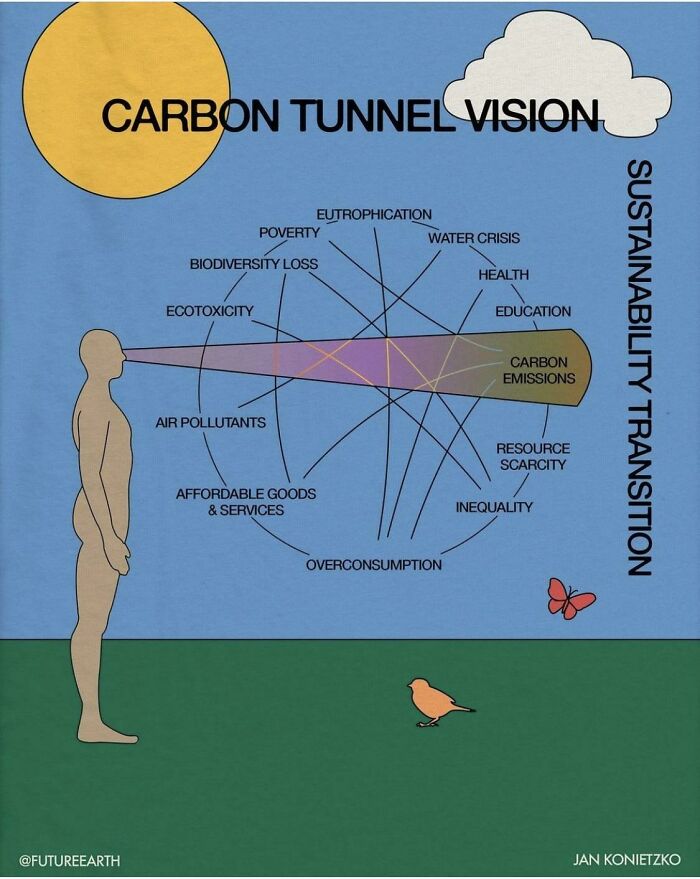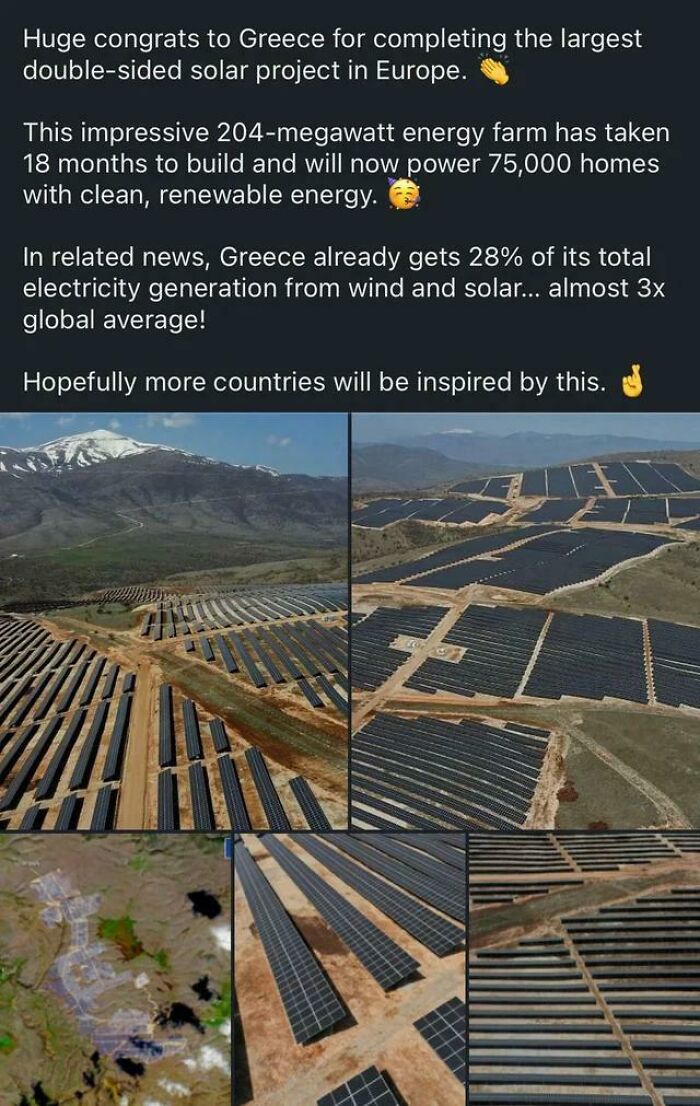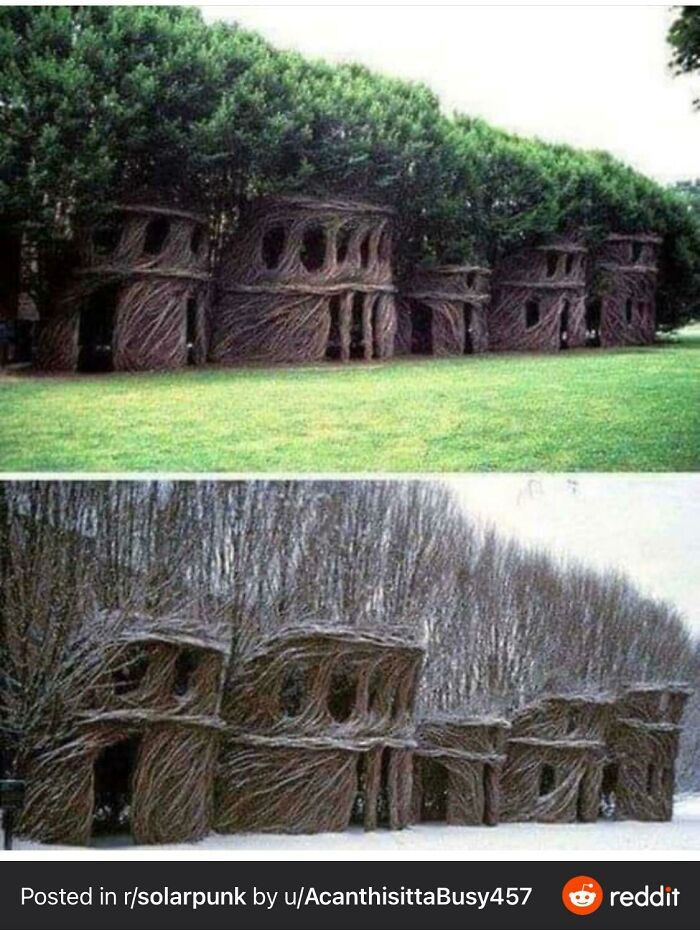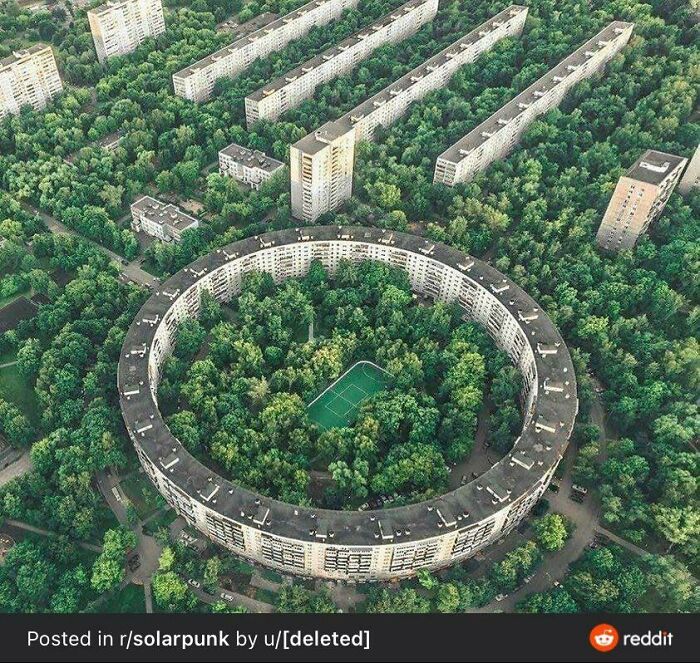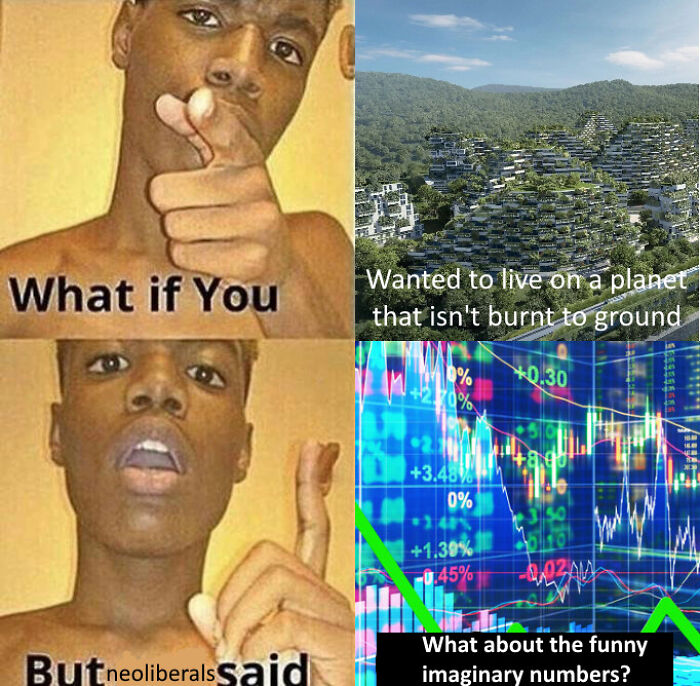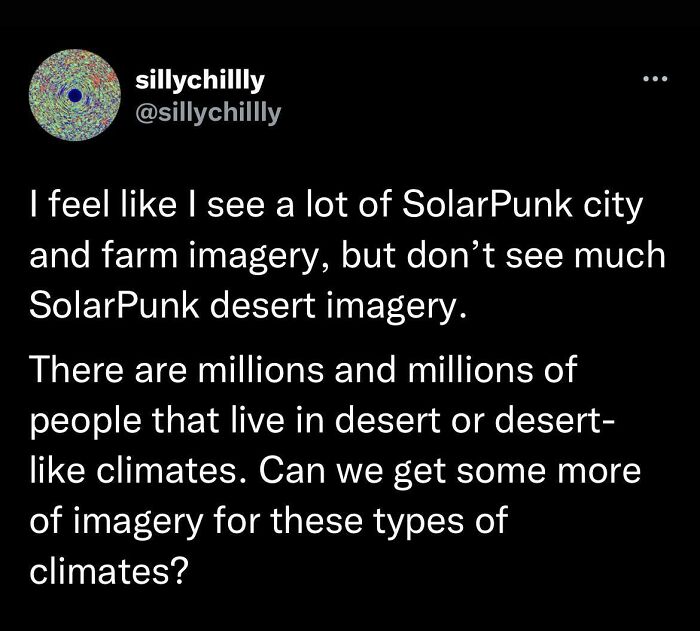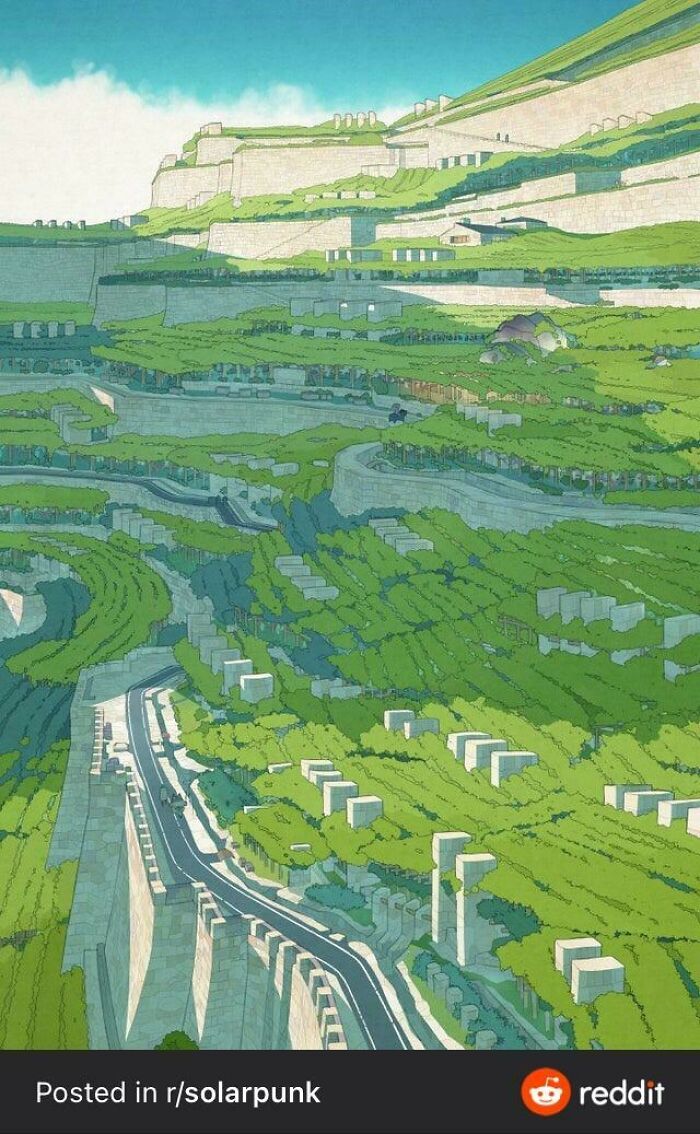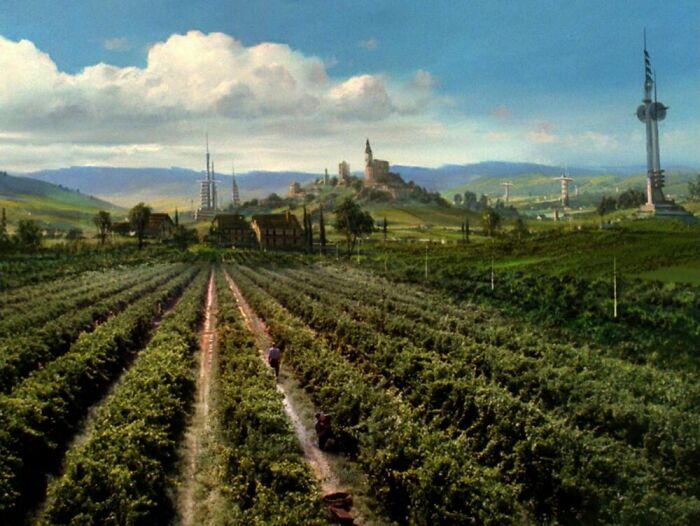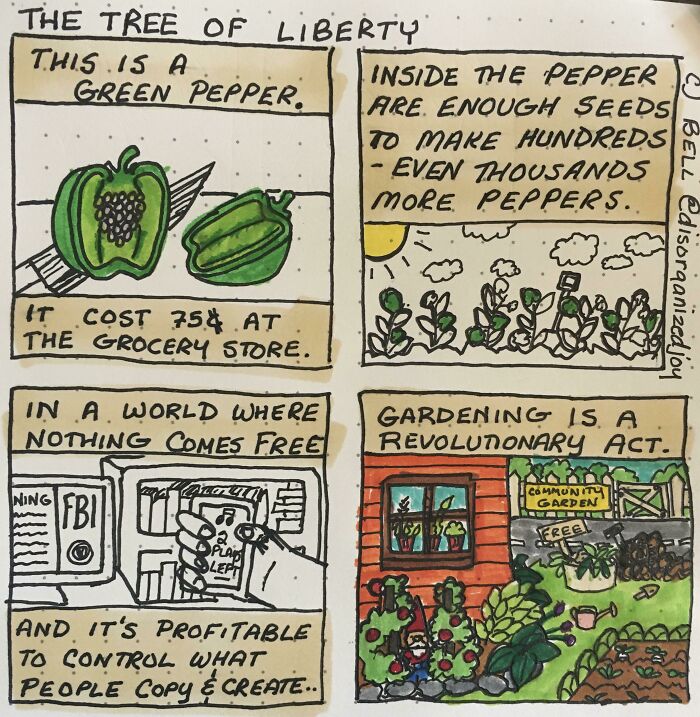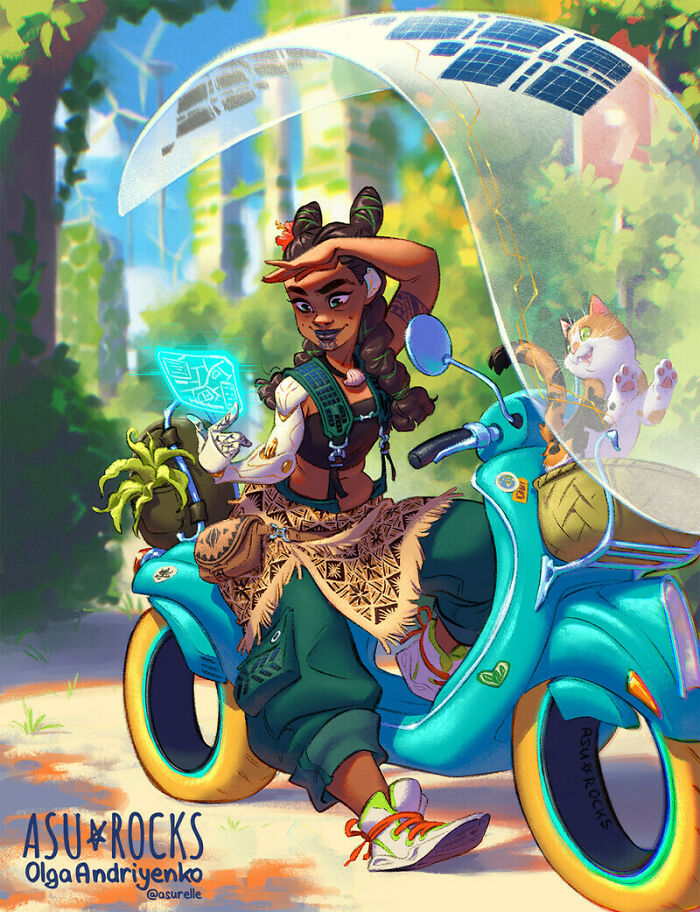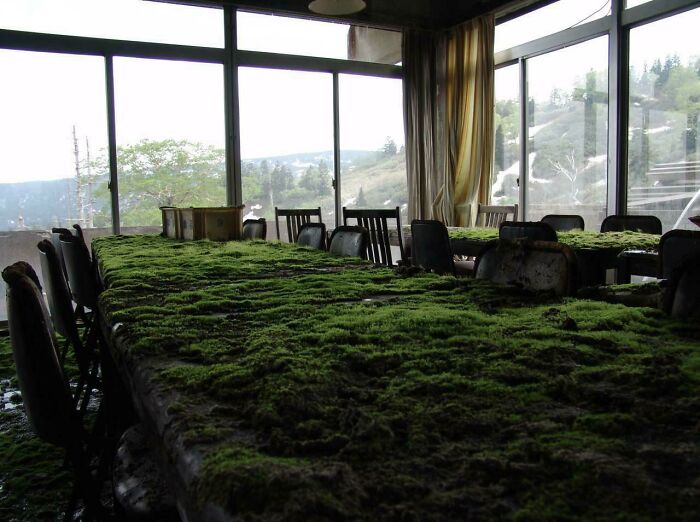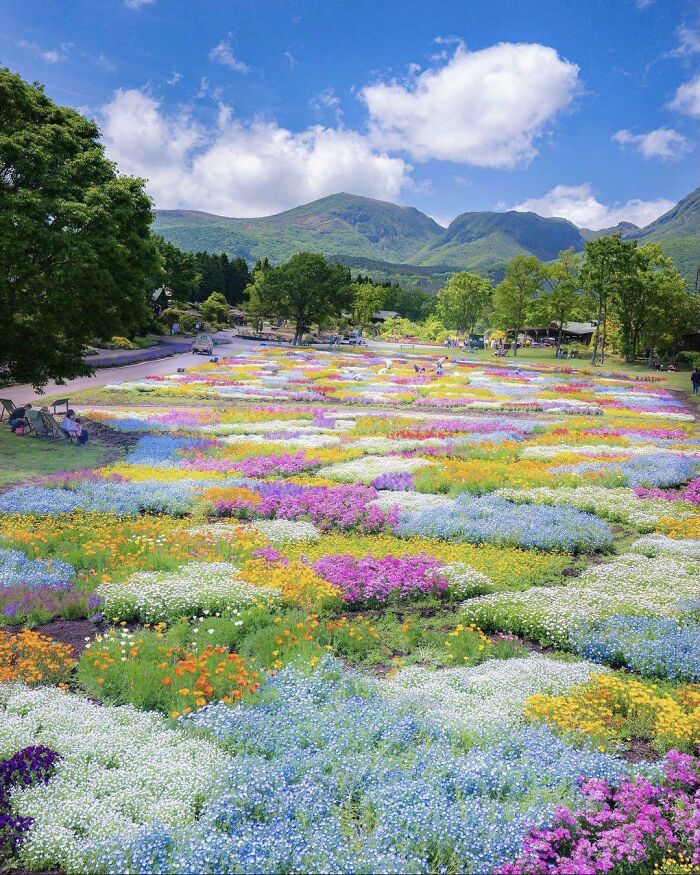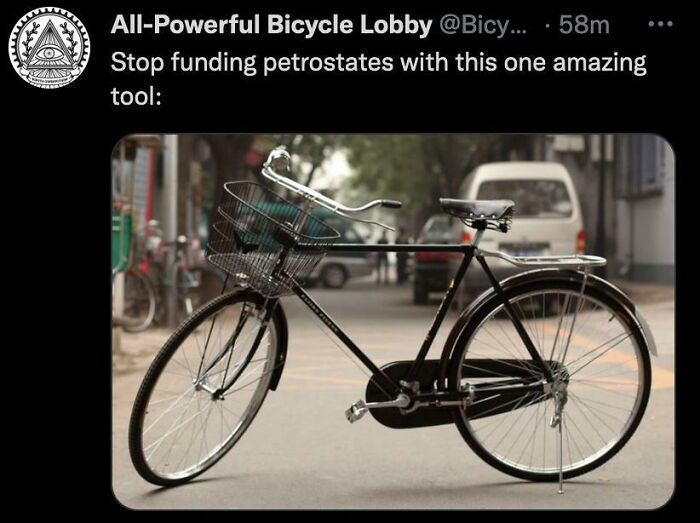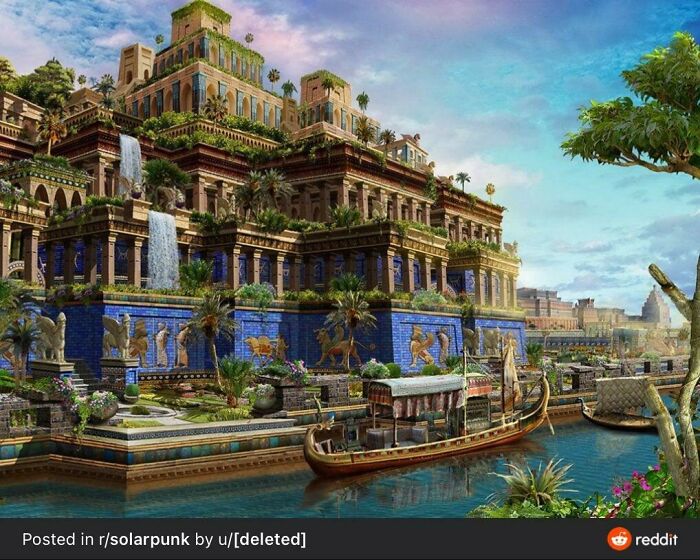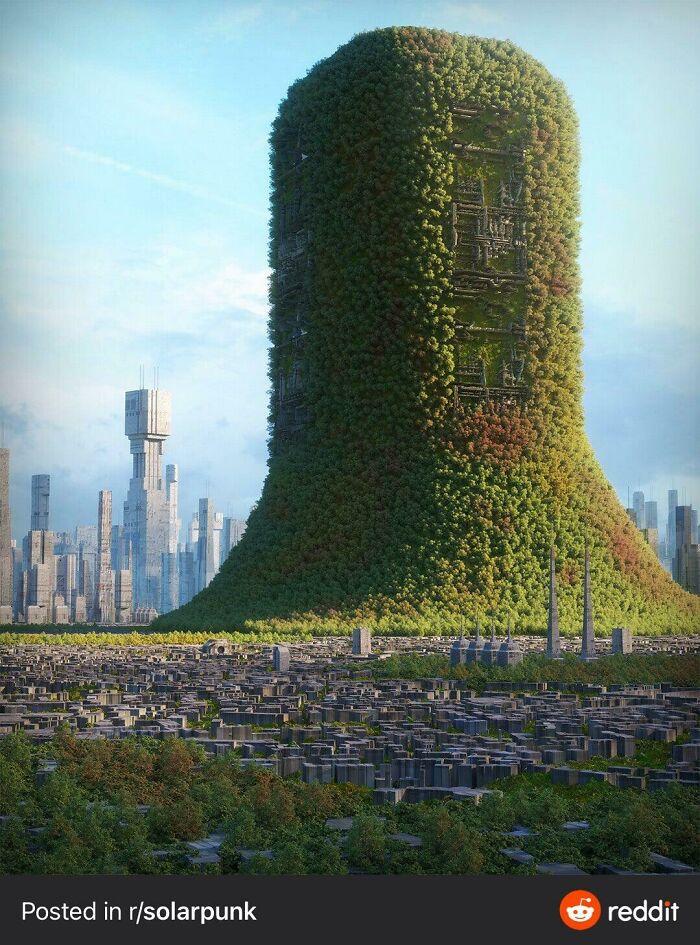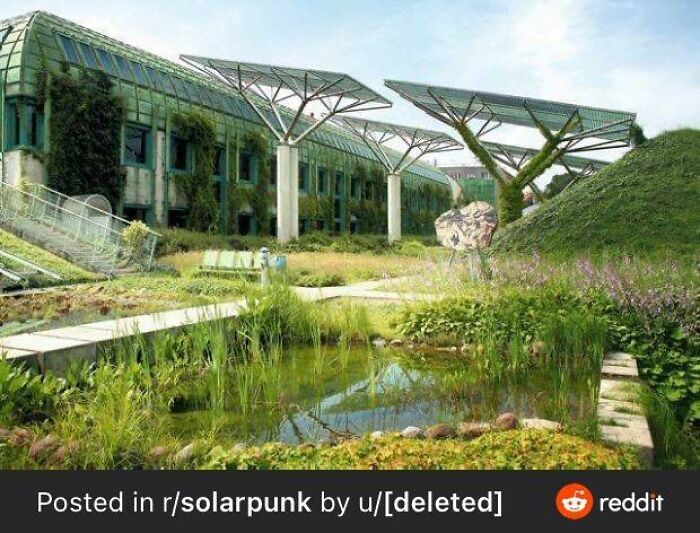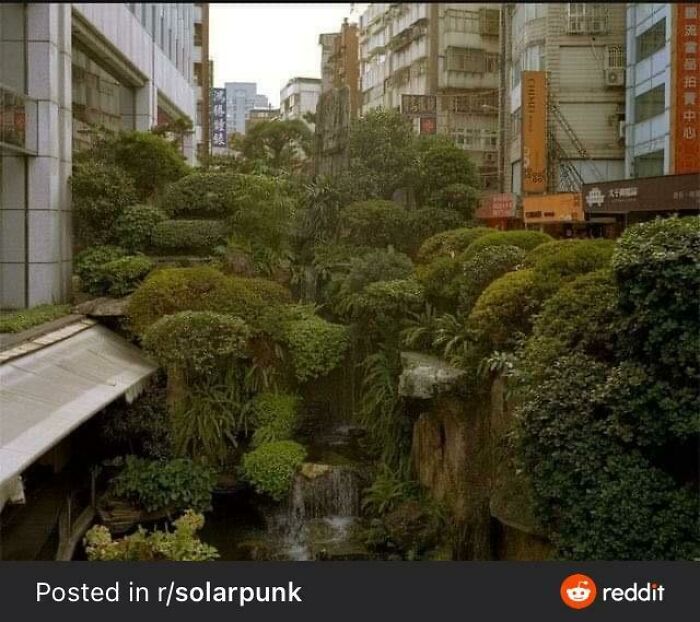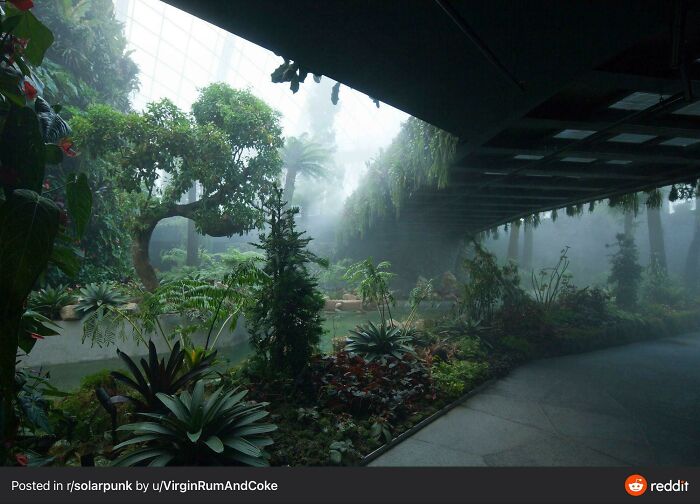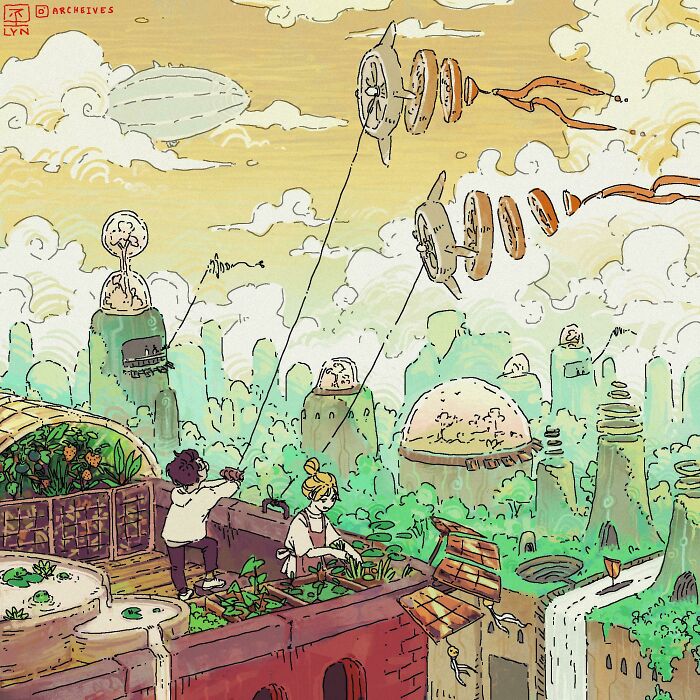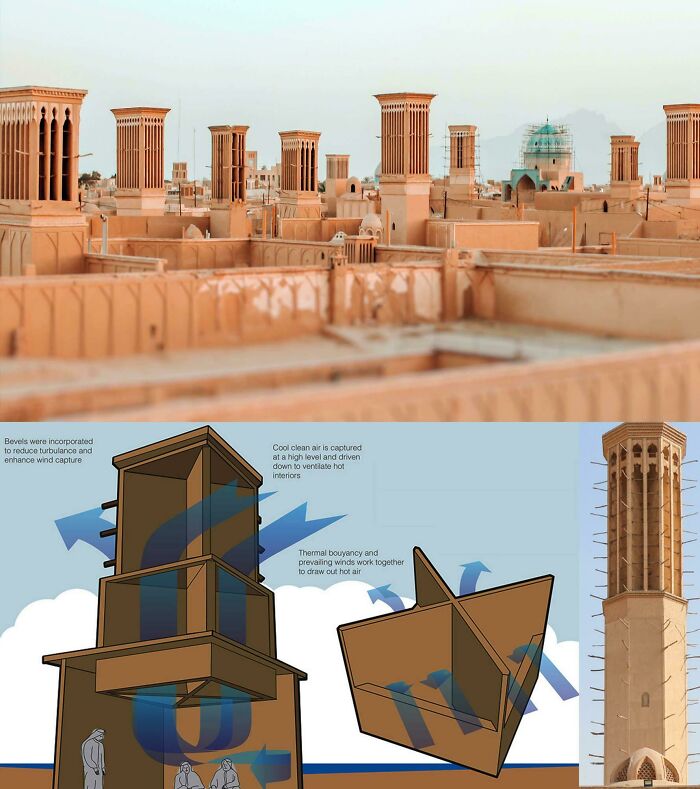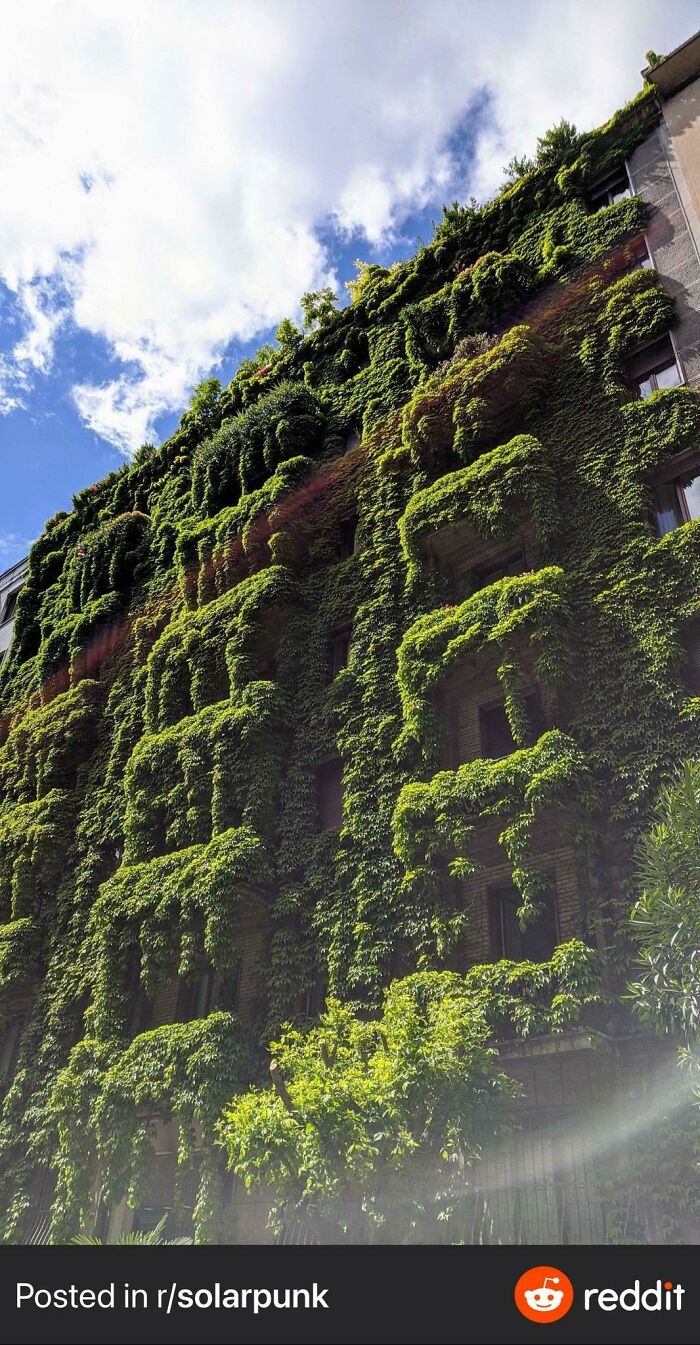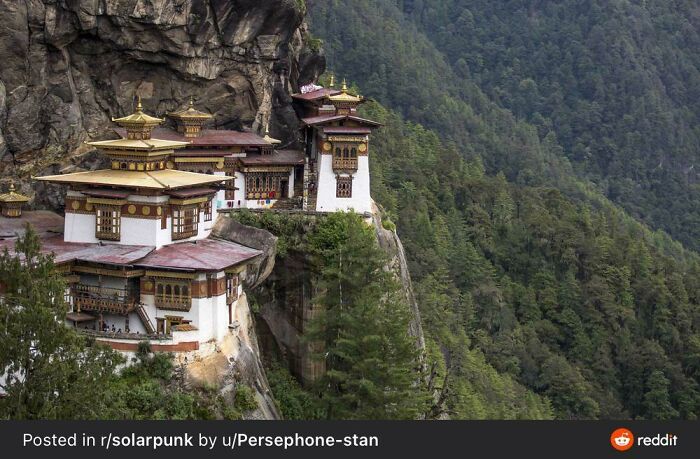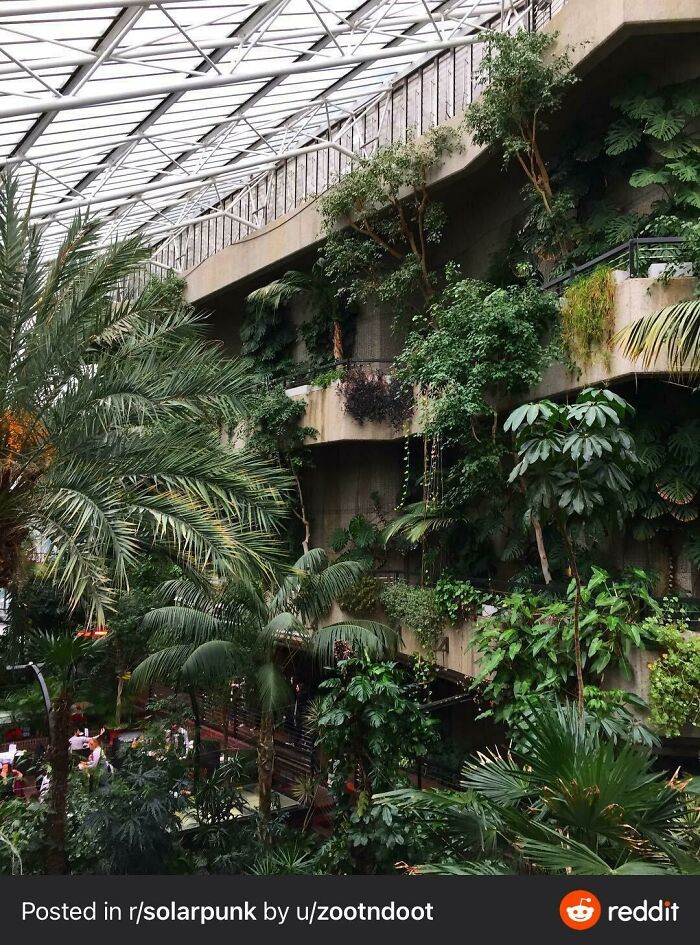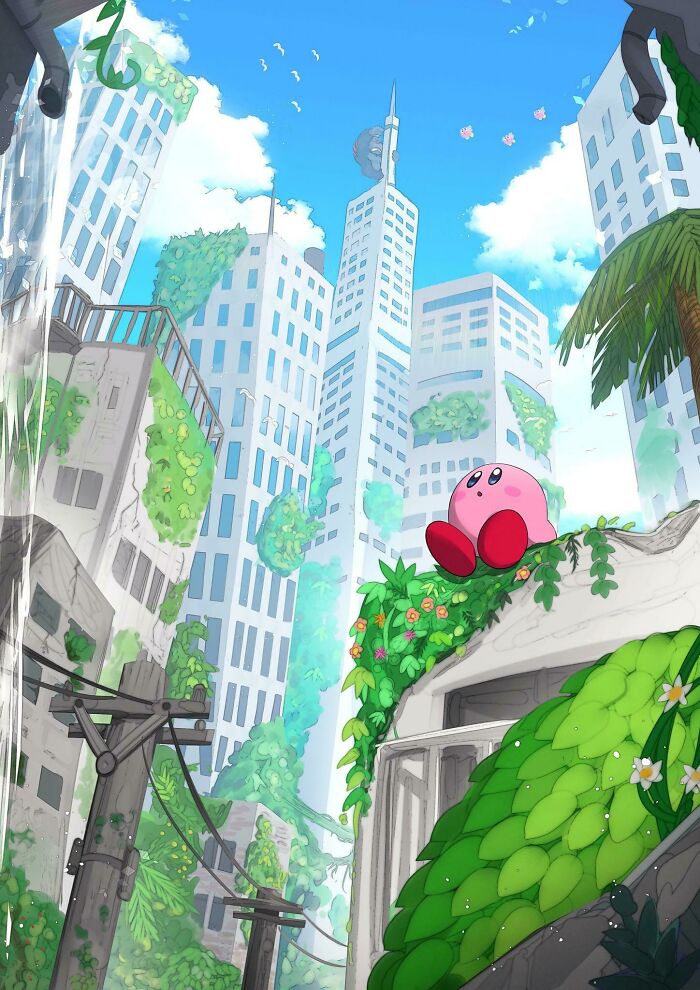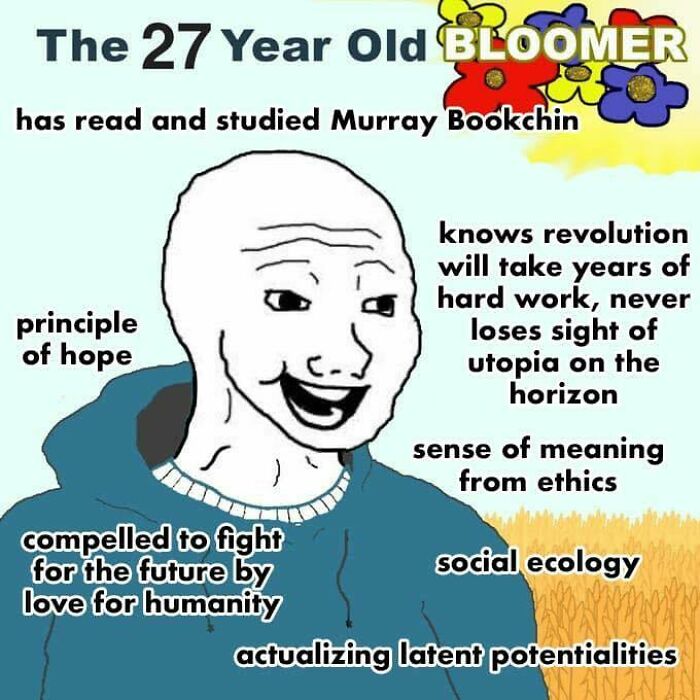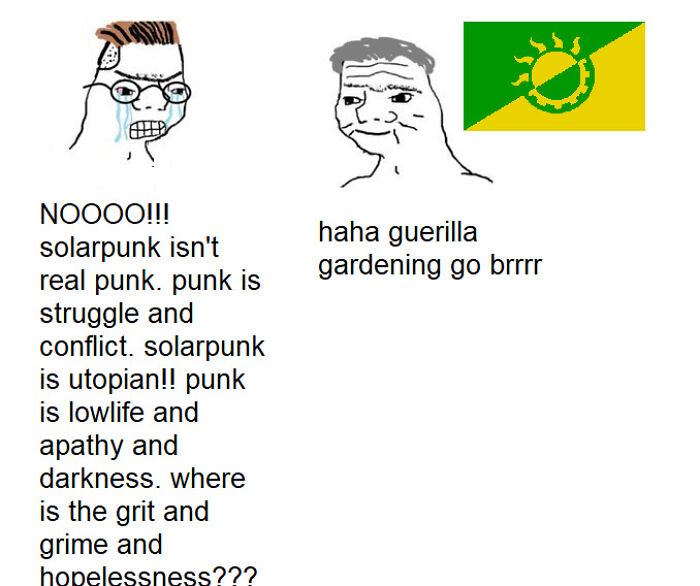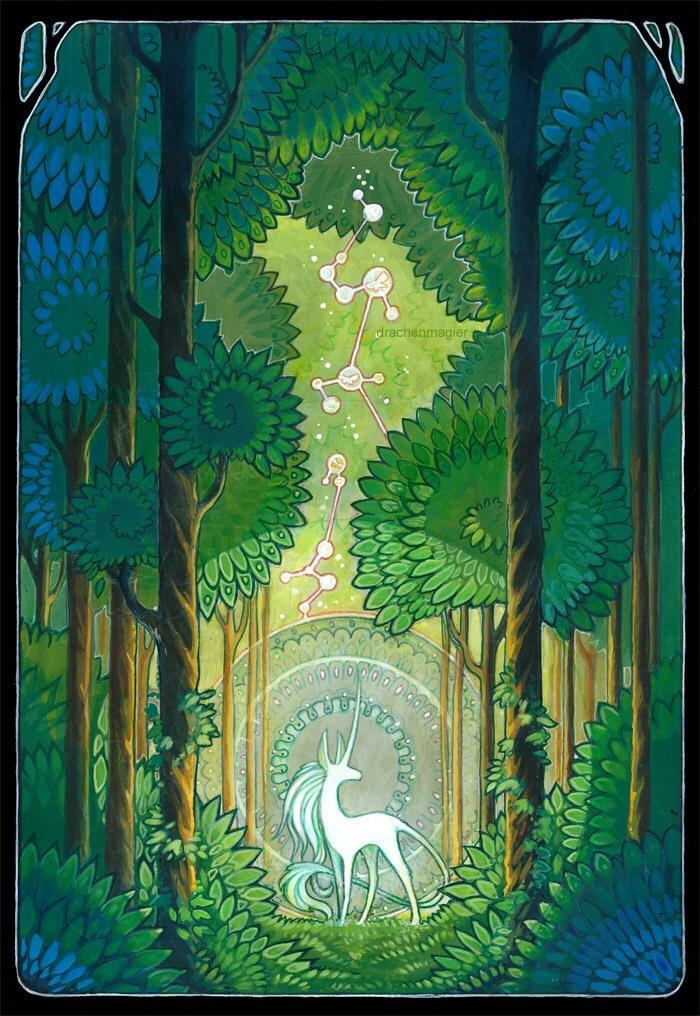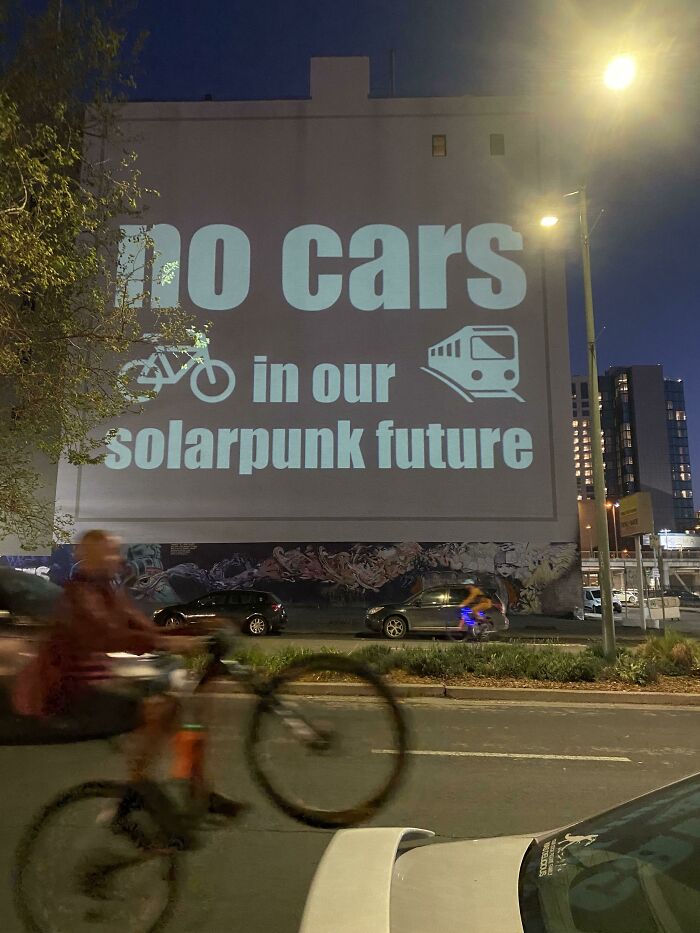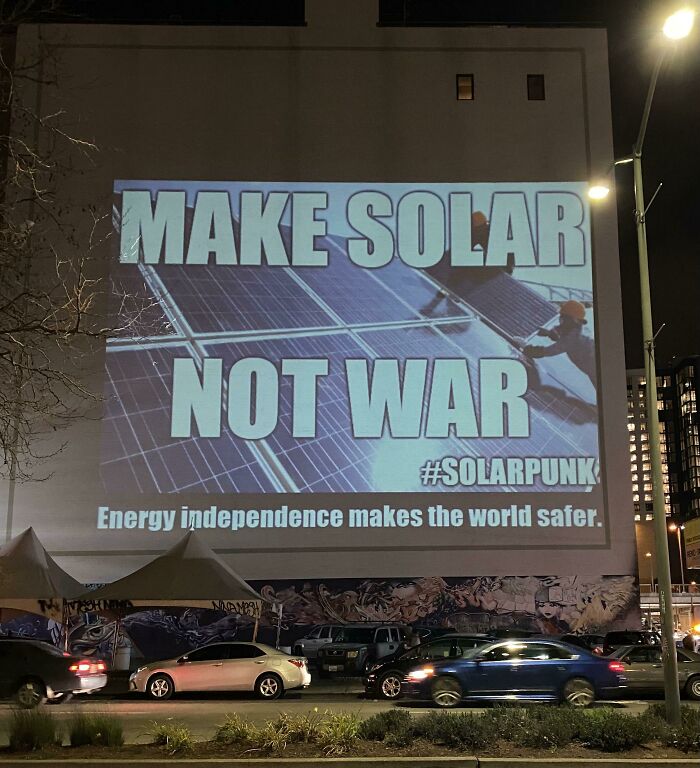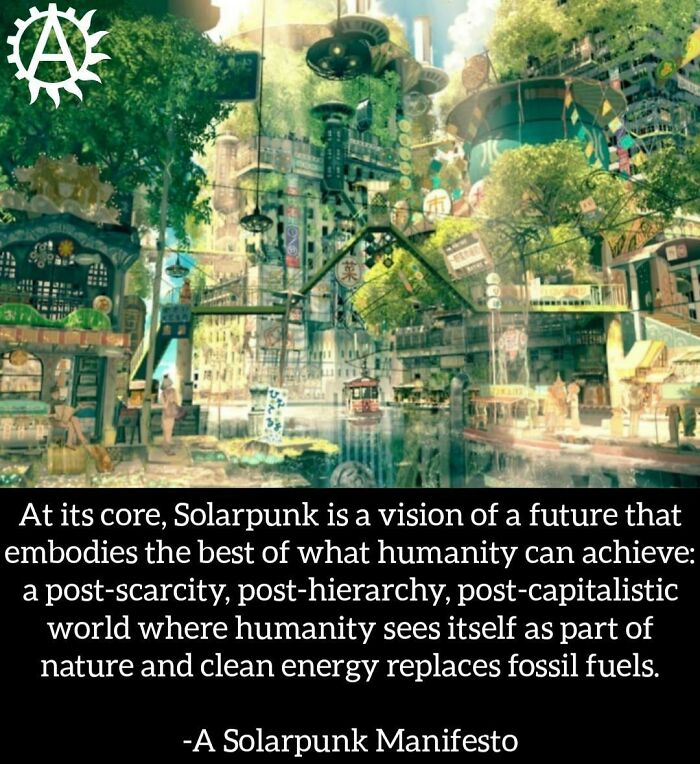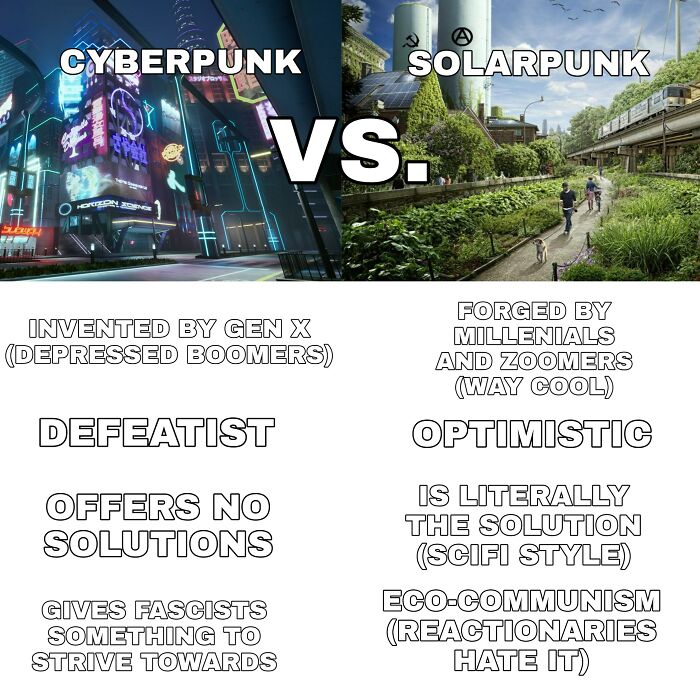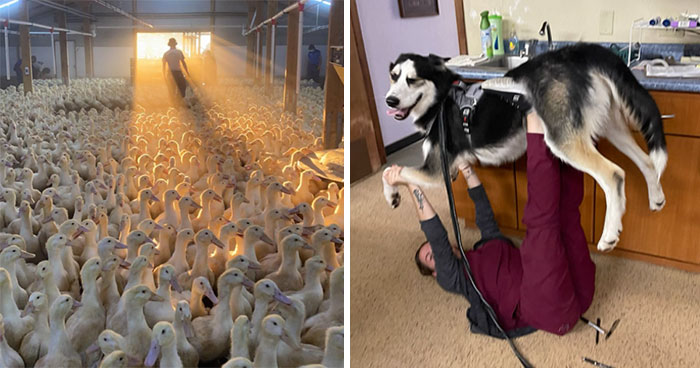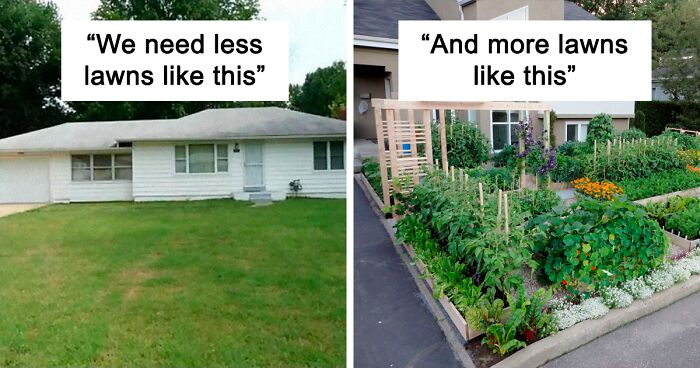
The “Solarpunk” Online Group Shares 30 Environmental Memes That People Who Are Sick Of Capitalism Destroying The Planet Can Relate To
It’s no secret that our planet is not in the healthiest state. Global temperatures are rising, weather disasters are increasing, more and more species are in danger of extinction, yet big corporations seem to only care about profits. We participate in “Meatless Mondays”, swear off plastic straws and cut down on car usage, but as individuals, our efforts to save the planet can often feel futile.
However, finding an online community passionate about saving the Earth is a great step in increasing our impact and spreading environmental enthusiasm. Meet the solarpunk subreddit: a group dedicated to sustainability. With the motto, "move quietly and plant things", r/Solarpunk self-describes as “everything from a positive imagining of our collective futures to actually creating it” which includes focusing on “aesthetics, afrofuturism, art, cooperatives, DIY, ecological restoration, engineering, ecofuturism, gardening, green architecture, green design, green energy, indigenous practices, intentional community, solar power, sustainability, tree planting, urban planning, volunteering” and much more.
As with the task of saving the planet, the solarpunk description may feel overwhelming at first, but after checking out this list of their posts, I'm sure their vision will be clear. Below, we even have an interview with scientist and solarpunk activist Phoebe Tickell to help explain their mission. So slide into your vegan leather Birkenstocks, grab some home-brewed kombucha and settle in to read all about solarpunk. Then when you’re feeling like embracing your inner Greta Thunberg, check out these other Bored Panda pieces focused on reducing waste and loving Mother Earth.
This post may include affiliate links.
I’ve Always Thought Old Malls And Strip Malls Could Be Converted Into European Style Walkable Towns
I work in a homeless shelter that is currently in an old grocery store. The building isn't right for a permanent shelter for various reasons, but in somecases, old big box stores could be modified for anything.
A cornerstone of the solarpunk belief system is the dream for technology and nature to exist in harmony. This is displayed through beautiful images of “lush green communities with roof-top gardens, floating villages, transport fueled by clean energy” and more. Explored in a BBC News article, solarpunk has been slowly gaining traction since 2008. “Solarpunk is really the only solution to the existential corner of climate disaster we have backed ourselves into as a species,” says Michelle Tulumello, a solarpunk art teacher. “If we wish to survive and keep some of the things we care about on the earth with us, it involves a necessary fundamental alteration in our world view where we change our outlook completely from competitive to cooperative."
As the name implies, the desire for increased solar energy is paramount to the solarpunk community. Sunlight is almost universally accessible, unlike natural gas and other fossil fuels, making it a preferred source of power for many environmental activists. Solarpunks dream to diverge from capitalism and reconnect with nature, and that starts with less dependence on our outdated electrical grids. All renewable energy sources are steps in the right direction, but solar power is the ideal source for solarpunks.
Y'all Like To Forget The Punk In Your Solarpunk
One possible reason solarpunk has needed time to take off is due to the negative connotations associated with the word punk. A spinoff from the imagined aesthetics of steampunk and juxtaposed to the dark future of cyberpunk, solarpunk creates a more optimistic, yet still radical, idea of our world. Phoebe Tickell, a biologist and solarpunk activist, told BBC News, “Prescribing to people that they need to be more solarpunk is much less inviting to them than encouraging people to exercise their own imaginations.” But to really enact change, people cannot be afraid of the side effects. Jay Springett, a solarpunk activist and admin of Solarpunks.net, describes the “poisonous pill” that must be swallowed when embracing solarpunk ideals. “It means that there's the decentralization of technology, the decentralization of power.”
The Truth Well Told
If you must have a lawn, consider clover for sunny areas and moss for shady areas. Both rejuvenate the soil and both attract beneficial insects.
Bored Panda got in touch with solarpunk activist Phoebe Tickell to ask what solarpunk means to her. She told us, "Solarpunk represents a new narrative and disruptive meme that can help me imagine a better future. It's an aesthetic, it's a sci-fi sub-genre, it's a movement, it's a vision of the future. It's called solarpunk because 'solar' refers to renewable energy and living in harmony with the sun, and 'punk' is about rebellion, innovation, open-source and collective action. Imagine a future where all human beings are treated with the same level of respect and dignity, we are living 100% off renewables, building tech ourselves, co-existing with animal companions and growing our own food at the same time."
She told us the reasons she loves solarpunk are because "it takes three narratives and weaves them together". The first being "that we need to protect nature and return to the land". The second being "that technology can be a force for common good". And the third being the importance of "human flourishing, social justice and equity". "These narratives usually exist in siloes and different tribes," Phoebe told us. "But solarpunk brings them together and asks us to imagine a world that optimises for all three."
Forget Grass
The flowers in my yard don't bloom as much as that, but we recently made our garden bigger (for the milkweed so my dad wouldn't accidentally mow it over) and we have a lot of flowers. Honestly, flowers in your yard are amazing. You don't have to mow, they help the pollinators, and they are beautiful. I may be biased, Flowers is my last name.
As of now, there have not been too many explicit mainstream examples of solarpunk, but oddly enough, a Chobani commercial from 2021 featured a sparkling example of a solarpunk future. The ad featured bright blue skies dotted with blimps generating wind power and endless fields surrounding a beautiful, high tech city. Robots helped harvest produce, and a note from Grandma hung on the fridge saying, “Our job is to plant seeds so our grandkids get to enjoy the fruit. Because how we eat today feeds tomorrow.” Some popular films have also featured solarpunk themes, such as Black Panther and many beloved Studio Ghibli films, like Castle in the Sky and Princess Mononoke.
Ecoducts: Green Bridges That Allow Wildlife To Cross Highways, Creating Connected Natural Areas
The idea is to reconnect resources back to the forest. This allow the population to stabilize.
We asked Phoebe how she has seen the movement grow over the years, and she told us, "When I first discovered solarpunk in 2015, nobody was talking about it. My blog was called 'Humans, Nature, Tech' at the time, because I was interested in what happens if you bring the three together and explore creating a new world from that lens. I was really keen to spread the word so I changed my Twitter handle to solarpunk_girl and did the same with my Instagram. I started speaking more widely on the topic in 2019 and since then I've seen a sharp increase in interest. More and more people are asking me about what solarpunk is, and I am seeing people writing their own articles and creating memes, artwork and even communities around the topic. In 2020, I started a design and research studio called Moral Imaginations which helps people imagine a solarpunk future. Last year this peaked when I was contacted by the BBC for an interview on solarpunk and imagination."
Agrihood In Detroit
Lastly, we asked Phoebe where she recommends people who are curious about solarpunk start their journey, and she provided great resources. "Search for 'solarpunk' on Twitter, Facebook and Instagram and follow the influencers they find on the topic. They could also follow RenaissanceU where we are creating solarpunk education programs. They could also get started on solarpunk sci-fi: The Dispossessed and Always Coming Home by Ursula Le Guin, Walkaway by Cory Doctrow, Dune by Frank Herbert, Parable of the Sower by Octavia Butler, Island by Aldous Huxley for some old school solarpunk, and Black Panther by Ta-Nahisi Coates for something more recent. Allow your imagination to explore these future, disruptive and radical scenarios and then find your communities online and start contributing in your own way to the movement - whether that is via fiction writing, artwork, memes or other ways of contributing to the plurality of these imagined futures!"
Forbidden Giant Chocolate
There are numerous wood alternatives that won't catch on unless people demand it. Corporations won't change their MO voluntarily.
Solarpunk does not call for surrendering technology or social media, rather it asks for decentralization. One example of this is Scuttlebutt, a popular site for solarpunkers. Scuttlebutt describes itself as a “decentralized secure gossip platform”. What it means by that is that data passes “from friend to friend, without any central server”. Twitter works in the opposite way, where content is hosted on a centralized server and constantly updated in real time. On Scuttlebutt, users’ data is stored on their own devices and networks they choose, rather than broadcasted to the entire internet. Sites such as this are popular for solarpunkers to gather and remain optimistic about the future through their communities.
Bat-Friendly Town Turns Red At Night
This Is What We All Really Want
Although the term solarpunk was coined in 2008, the ideas behind it are not new. In her Vice article on the topic, Hannah Steinkopf-Frank mentions that many solarpunk practices are inspired by centuries-old Indigenous techniques, such as permaculture or rain collecting. Indigenous communities have always modeled how to have a harmonious relationship with nature, something many of us could learn a thing or two about this day in age. Even the 1988 Talking Heads’ hit “(Nothing But) Flowers” featured David Byrne nodding to a solarpunk future. The song includes lines such as “There was a factory / Now, there are mountains and rivers” and “There was a shopping mall / Now, it’s all covered with flowers”.
Positive-Imagining-Of-Future-Solarpunk
I Am Indigenous Khasi From Meghalaya, India. Our Ancestors Built Bridges From Roots A Long Time Ago. We Have Very Little Pre-Colonial History, So Not Sure How We Got Started. Of Course Maybe Not Solarpunk Because It Is Not In Urban Setting. But I Still Like To Hope/Think We Were The Og Solarpunk
End Wonderbread Lawns
I get what they are saying, but there is a reason we have short lawns. I live in an area where ticks are a massive problem, and constantly walking through tall grass like that means everyone living there is going to get Lyme disease and other tick borne illnesses.
Solarpunk has gained a worldwide following, including a passionate community in Brazil. The first collection of solarpunk fiction, "Solarpunk: Ecological and Fantastical Stories in a Sustainable World", was published in 2012 in Brazil. Ana Rüsche, an author and researcher from São Paulo, weaves solarpunk themes into her fiction and non-fiction writing. Her novella, "Telepathy Is Other People", follows the story of a girl who travels to Chile and learns about seed preservation, an important issue in Brazil where most of the corn grown is genetically modified. Rüsche says that, "Solarpunk is not naïve. We are facing the world we have already, so the challenge is to imagine together, and that’s really beautiful.”
Saw On Tumblr And Wondered What Y'all Thought About This Take
My 13yo wants to live in Iceland when they grow up. I'm encouraging it 100% because Iceland looks like the greatest place on earth.
A Small Big Change
Natural Resilience!
Great until Russia invades the Red Forest and soldiers start campfires releasing the trapped nuclear waste into the atmosphere.
Books aren’t the only way solarpunkers are trying to make their message more accessible. That’s where Keisha Howard comes in. Howard is the founder of Sugar Gamers, an organization committed to increasing diversity within the worlds of technology, gaming and the arts. In 2018, Howard gave a Tedx talk titled “Imagining a SolarPunk Future” and has even created her own game, Project Violacea, exploring solarpunk themes. The premise of the game is detailed on the Sugar Gamers website:
“In a dystopian future ruled by an oppressive totalitarian regime called the MOX Hierarchy, a group of super revolutionaries is waging a war for liberty, knowledge, and justice. The MOX took control of the world as it teetered on the brink of world war, environmental collapse, and global pandemic. To save humanity, the MOX built great, domed cities covered in solar panels. The walls of the cities protect the citizens from the blasted, plagued wasteland the outside world has become, but they come at a cost. Because climate change, pollution, and environmental destruction have made life on earth so harsh, the MOX is forced to make difficult decisions to protect the cities daily.”
Positive-Imagining-Of-Future-Solarpunk
Moss needs a "foresty" environment, I think. Dark, moist. You can't get a full moss lawn in your sunny front yard, it will die.
There's An Ancient Japanese Pruning Method From The 14th Century That Allows Lumber Production Without Cutting Down Trees Called “Daisugi”
Koreas Largest Floating Flower Shaped Solar Plant
Installing such a solar field over a water reservoir sounds like a better idea than covering it with plastic balls.
The solarpunk vision does not need to be viewed only as fictional or a far-off future. Some places around the world are already taking steps toward the solarpunk dream. The city of Detroit, Michigan, unveiled the United States' first sustainable urban "agrihood", The Michigan Urban Farming Initiative (or MUFI), in 2016. This agrihood is a 3-acre farm with the mission of ending food insecurity in a lower-income area. Detroit, which has long been labeled one of the “most dangerous” and “most violent” cities in the US, is working towards adding many agricultural neighborhoods to signal safety for visitors and make residents feel more at home. Produce is free to all at MIFU, and the community is growing stronger through maintaining the farm and helping one another.
Rules For A Reasonable Future
Love Seeing Change Like This!
Scrolling Through This Sub
Another real-world example is the Global Ecovillage Network, or GEN Europe. As described on their website, GEN is a “network for ecovillages and sustainable communities” with a mission to “support and connect the ecovillage movement, encourage ecovillage development, educate for sustainability and ultimately create a world where empowered local communities are at the forefront of creating a fairer society that regenerates the earth, and ourselves”. With over 100 ecovillages across Europe, GEN is working hard to “regenerate the environments” of these villages and inspire more cities globally to do the same.
To Combat The Threat Of Desertification Of The Sahel (The Region Immediately To The South Of The Sahara), The African Union Is Leading An Initiative To Plant The Great Green Wall, A 7,775 Km (4,830 Mi) Belt Of Trees Crossing The Entire Breadth Of North Africa
On /R/Cyberpunk/ Now: "We Thought That Tokyo Was Going To Become Cyberpunk, But It's Actually Turning More Solarpunk -"
Gardens are just soothing places to be in, we need more of them not less.
“Parkipelago” Of Floating Islands
Copenhagen is another dream destination for passionate solarpunkers. CopenHill, or Amager Bakke, is a heat and waste-to-power plant that was built in 2017 and is now world famous for having an artificial ski slope atop the plant as well. Copenhagen has a goal of being carbon-neutral by 2025, and they’re on the right track by housing the cleanest waste-to-energy power plant in the world. The artificial ski slopes don’t rely on natural or man-made snow, making them usable year round, and for those not interested in skiing, CopenHill also features a climbing wall, running track and café.
Gardening Is A Revolutionary Act
I do agree with this to some extent, but sometimes the produce has been selected so that it travels and keeps better, which reduces waste.
I Detect No Lie
Positive-Imagining-Of-Future-Solarpunk
Imagine how much our mental health would improve if it looked like this everywhere.
Imagining the future of the world is a daunting task, but at the rate we're currently at, the planet may have limited future left. Solarpunks aspire to embrace technology but to care for nature as well, rather than exploit it. If we keep an open mind to what our world can look like, maybe we can work towards a more sustainable and technologically advanced Earth. After all, living in a high rise that's covered in greenery and surrounded by urban gardens sounds pretty appealing to me.
Biodiverse Prairie Is The Ultimate Chad
Take Pride In Being Called Radicals. Saving The World Means Changing Everything
All We Need For A Solarpunk World...
Queremos Árvores (Marquês De Pombal, Lisboa)(X-Post From /R/Portugal)
Doomsday Preppers
My dad has an arsenal and several thousand rounds of ammo. We live in a rural county with a lot of farms, many owned by Old Order Mennonites who know how to plow with mules. I know who I'm going to if it comes to that.
Positive-Imagining-Of-Future-Solarpunk
For Those Complaining About Art Nouveau Building Not Being True Solarpunk.
🌱🌳
Grow All The Things
Chongqing Can Be Gritty, But There Is Also A Solarpunk Energy That I Find Inspiring
Positive-Imagining-Of-Future-Solarpunk
.-.
On that note, I remember reading that about $71 billion dollars is lost each year due to churches not paying taxes and religious tax exemption. Let's think about that for a minute.
Positive-Imagining-Of-Future-Solarpunk
This is a fine example of why we should never look down on ancient civilizations because of their so-called less advanced technology. Some of them have thrived for millenia in difficult environments. They knew perfectly what they were doing (and some of them still do). We have only been able to rot the planet in less than 200 years.
2022 Alignment Chart
Found On Insta, Thought It Fit Well Here (X-Post From /R/F***cars)
Towards A Solarpunk Future
Monoculture Grass May Not Be The Best Of The Best, But We Still Should Have Any Greenery, Wherever We Can, Even Light Rail Beds
Positive-Imagining-Of-Future-Solarpunk
Solarpunk Art, Think I Found It Here But Not Sure
This is the exact vision my father has whenever he talks about the future
I'm New To The Movement And Finding Lots Of Hope In Solarpunk. I Hope This Is Okay To Post Here!
"Solarpunk" is a new phrase, but an old concept to me. In some ways, it looks like how smart poor people just fix stuff up and grow their own food. I'm all in.
Stronger Together - Artist: @brenna.quinlan
Absolute Legends, Really
Artist Credit: @brenna_quinlan
A better descriptive term for the lower-right panel would be Agrisilviculture.
Trams Are Solarpunk Af
Monoculture vs. Permaculture, Which One Looks Better To You?
Not Cars.
I’d Play It
Be Aware Of Ecofascism And Shut It Down Before It Escalates
Eco-disaster movies sometimes include the super-rich being able to escape in spaceships. I enjoyed how "Don't Look Up" handled that.
Positive-Imagining-Of-Future-Solarpunk
Eat All Year
Futurepunk Alignment Chart! || Sumsolaradio
❤️disruptive Compassion❤️
We Must At Least Not Let Our Imaginations Sink Into 'Cyberpunkism'
Have Y'all Seen Nausicaä, From Themes Of Ecology And Anti-Militarism I Think It Fits Well With Solar-Punk? Thoughts And Opinions?
🌱ⓐ☀️
Positive-Imagining-Of-Future-Solarpunk
From 4chan Of All Places
Rules For A Reasonable Future: Work | Unsure If It Fits Here, But Figured I’d Try
Businesses should also be regulated in HOW they employ people. A business that employs thousands, yet manages to keep most of them as part-time or "seasonal" employees to avoid paying benefits needs to go.
Trash Can Of The Future (Oc)
Positive-Imagining-Of-Future-Solarpunk
Positive-Imagining-Of-Future-Solarpunk
10th Century House In Iran.
Mushroomed, Text From Rebecca Solnit
We are the champignons, my friends. And we'll keep on fighting til the end
The Complexity Of Thing
Extremely Hopefull News From My Country In Regards To Solar Power Production.
What I don‘t like about these solar farms is, that they occupy land that could be used for farming. If they put all these on roofs of existing buildings, no space would be wasted. Or maybe double use: car manufacturers need a lot of parking space for their new cars. These could be parked under those solar panels- winwin because the cars had shade. In my country they sometimes have sheep around these panels- they get shadow and keep the vegetation under control.
Rule
Or if you want lawn try clover. Pretty , heals the ground, no mowing needed
Positive-Imagining-Of-Future-Solarpunk
Positive-Imagining-Of-Future-Solarpunk
Can Someone Share Some Desert Solarpunk Imagery?
Positive-Imagining-Of-Future-Solarpunk
Positive-Imagining-Of-Future-Solarpunk
A Solarpunk France From Star Trek: The Next Generation
In A World Where Nothing Comes Free
Positive-Imagining-Of-Future-Solarpunk
Forget Grass
The Humble Bicycle, A Revolutionary Tool
Positive-Imagining-Of-Future-Solarpunk
That's not future solarpunk, that's past mesopotamian solarpunk... I think it's an artist view of the hanging gardens of Babylon, one of the lost wonders of the world.
Positive-Imagining-Of-Future-Solarpunk
Positive-Imagining-Of-Future-Solarpunk
Positive-Imagining-Of-Future-Solarpunk
We're trying to get a permanent space for our homeless shelter. I would love to have a green building. I'm going to start working on some ideas to present to our board of directors.
Positive-Imagining-Of-Future-Solarpunk
Positive-Imagining-Of-Future-Solarpunk
Solarpunk Rooftop Gardening - Concept Art By Me
We Don't Need Ac (Architecture)
Positive-Imagining-Of-Future-Solarpunk
Positive-Imagining-Of-Future-Solarpunk
Positive-Imagining-Of-Future-Solarpunk
Positive-Imagining-Of-Future-Solarpunk
I'm A Bloomer Not A Zoomer
Haha Solarpunk Go Brrrr
Positive-Imagining-Of-Future-Solarpunk
Projected In Oakland
“Make Solar Not War,” Projected In Oakland.
🌱ⓐ☀️
This Solarpunk/Cyberpunk Comparison Meme Chart I Made Has Been Recieved Really Well On My Instagram. Thought I'd Share It Here
(1) Cyberpunk was not invented by GenX. William Gibson is thought to be the creator of cyberpunk, and he's a Boomer (b. 1948). (2) It's really easy to criticize GenX, but Millennials have had a HUGE advantage with a worldwide internet. What you're doing was literally not possible in our generation. You're able to communicate with people around the world and coordinate your actions, and instantly access information and share ideas. (3) The reason GenX is so nihilistic is that we knew things needed to be changed, yet we had no power, voice, information, etc. to effect these changes. Show some of the boundless empathy y'all claim to possess and stop blaming GenX for stuff that wasn't our fault.
I have an idea for dealing with plastic, what if every house has a built in 3d printer? You throw plastic waste in a bin and the moment it gets full the plastic gets whisked off where it gets processed and melted so that you can 3d print something you need instead of going outside and buying it?
The greatest enemy of plastic recycling is the purity of the end product. Post-consumer recycled plastics are always lower quality than new plastics because they have acquired contamination from other materials (product residue, organic matter, other types of plastics, etc). Trying to get that contamination out to make new good-quality products from recycled plastics is the greatest challenge we need to overcome. Until that gets sorted, we should strive to use as little plastic as possible and use paper, metal or glass instead. Metals don't have the same magnitude of recyclability issues, paper will decompose, and glass (though heavy) has zero long-term environmental impact regardless of disposal method. Glass isn't biologically reactive, environmentally mobile, or toxic. It's essentially a mineral.
Load More Replies...This seems like we should just turn the world into it how do we start
I have an idea for dealing with plastic, what if every house has a built in 3d printer? You throw plastic waste in a bin and the moment it gets full the plastic gets whisked off where it gets processed and melted so that you can 3d print something you need instead of going outside and buying it?
The greatest enemy of plastic recycling is the purity of the end product. Post-consumer recycled plastics are always lower quality than new plastics because they have acquired contamination from other materials (product residue, organic matter, other types of plastics, etc). Trying to get that contamination out to make new good-quality products from recycled plastics is the greatest challenge we need to overcome. Until that gets sorted, we should strive to use as little plastic as possible and use paper, metal or glass instead. Metals don't have the same magnitude of recyclability issues, paper will decompose, and glass (though heavy) has zero long-term environmental impact regardless of disposal method. Glass isn't biologically reactive, environmentally mobile, or toxic. It's essentially a mineral.
Load More Replies...This seems like we should just turn the world into it how do we start

 Dark Mode
Dark Mode 

 No fees, cancel anytime
No fees, cancel anytime 






